
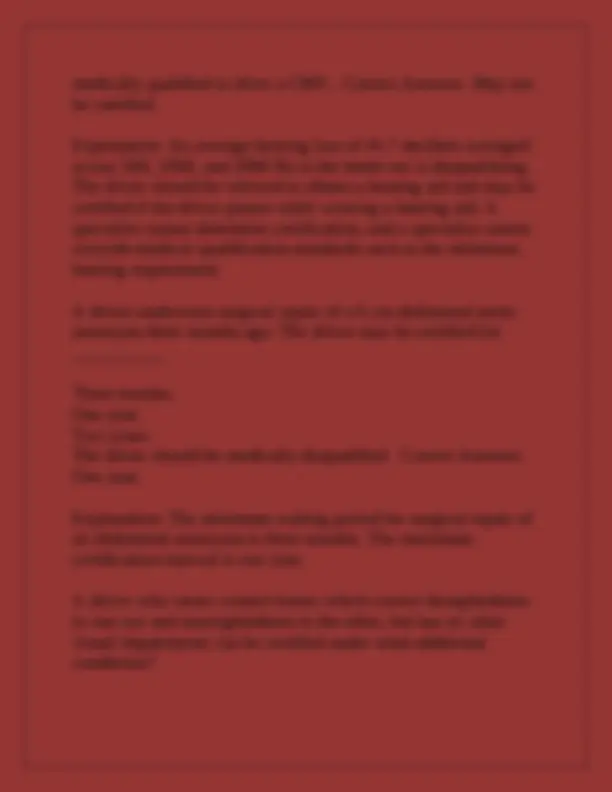
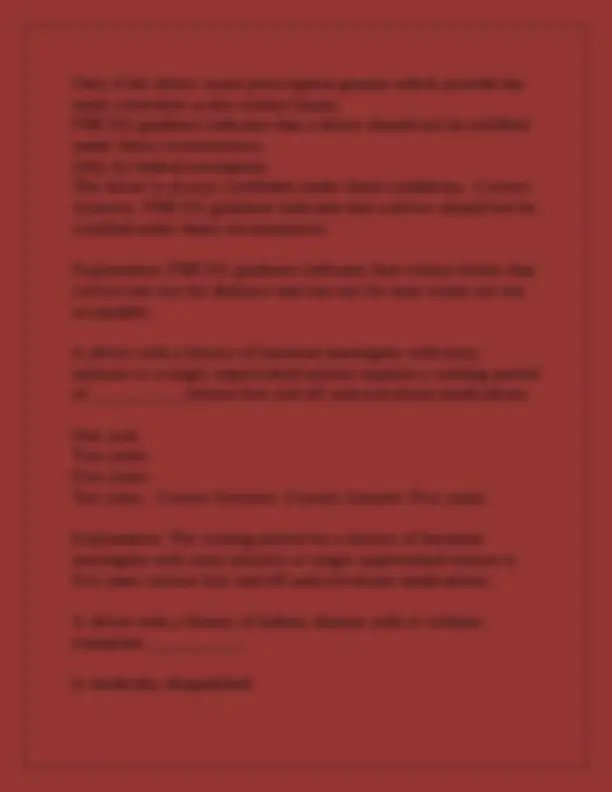
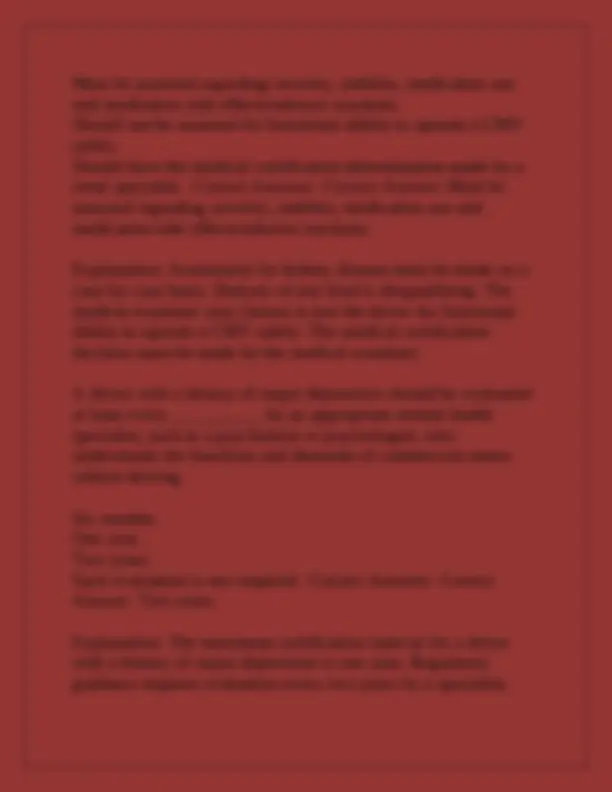
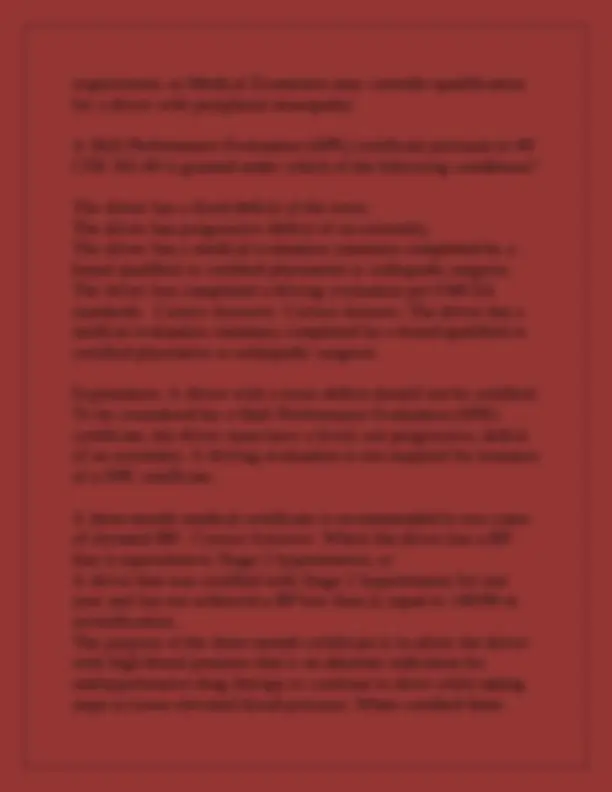
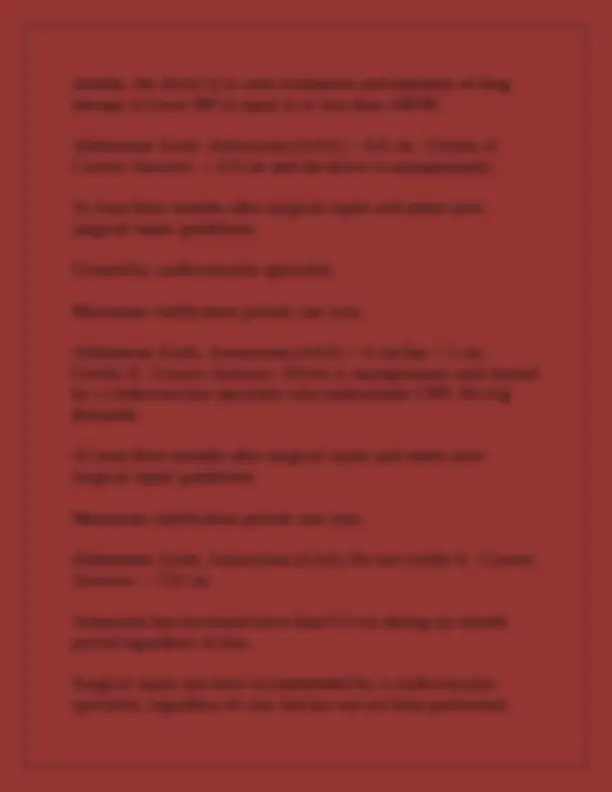
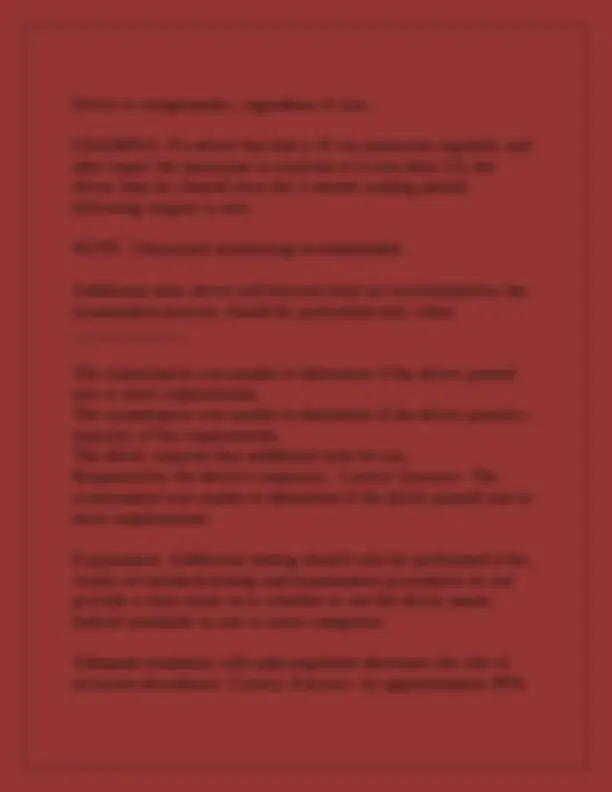
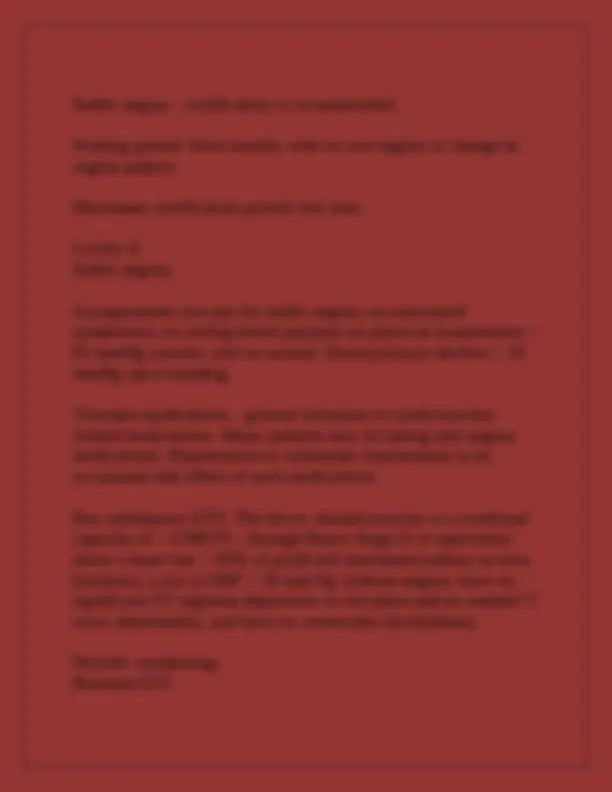
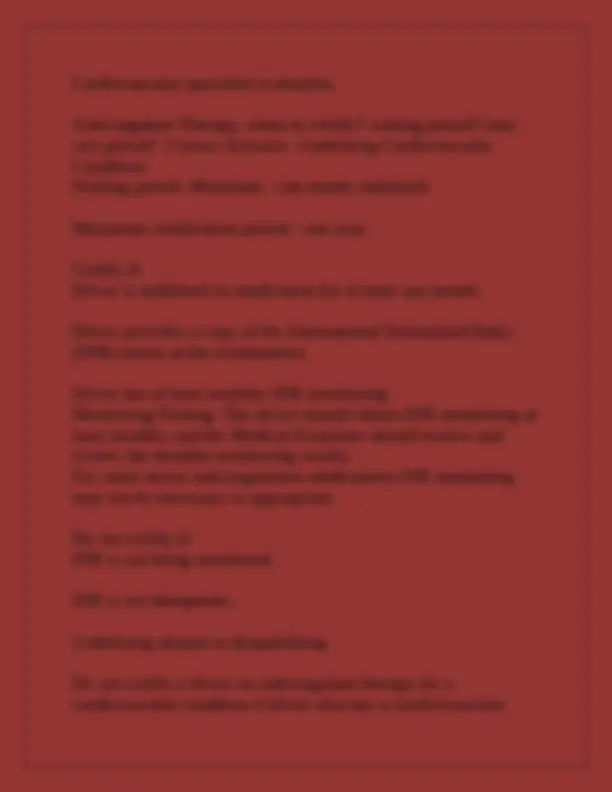
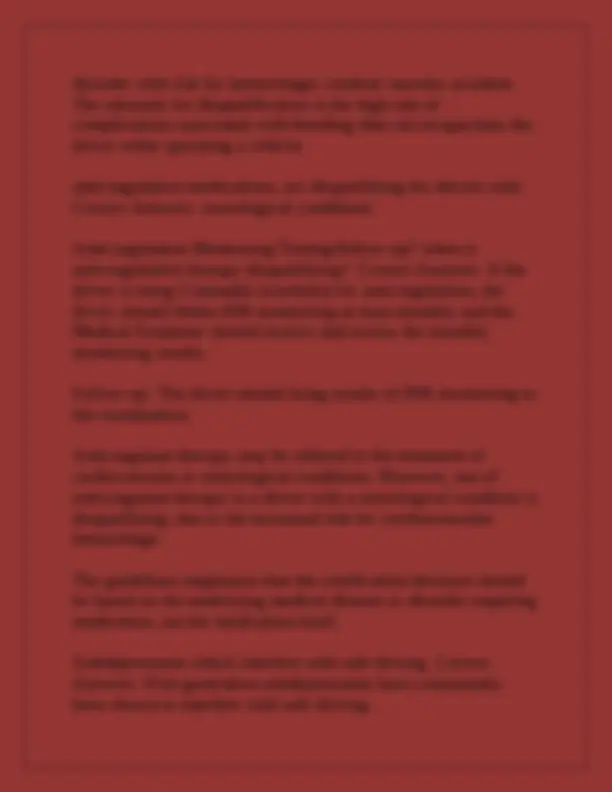
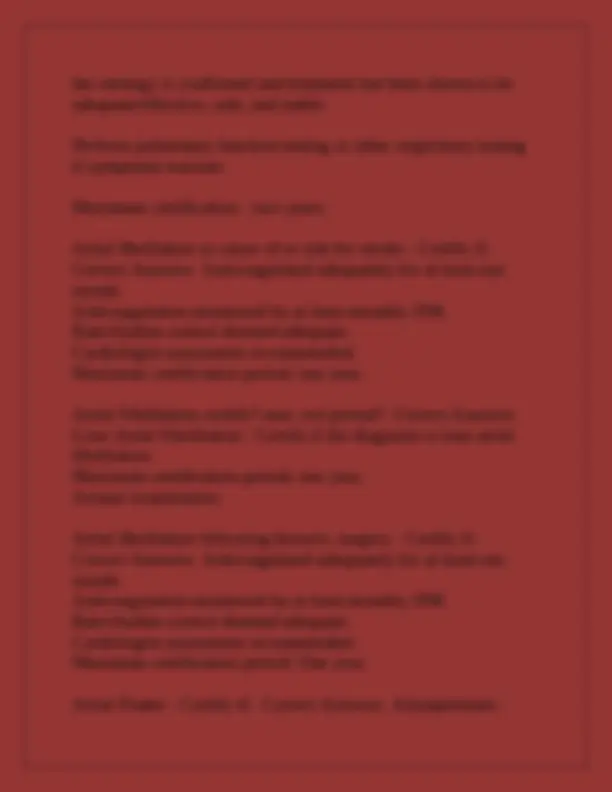
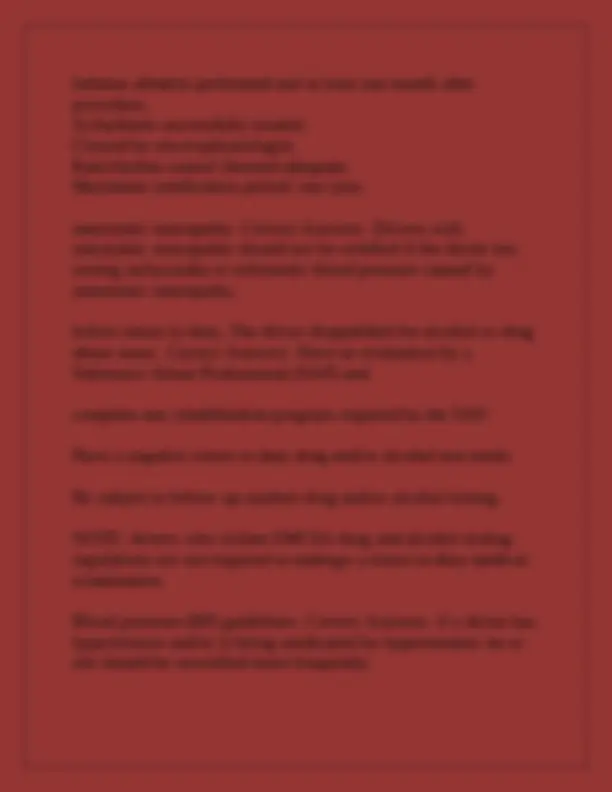
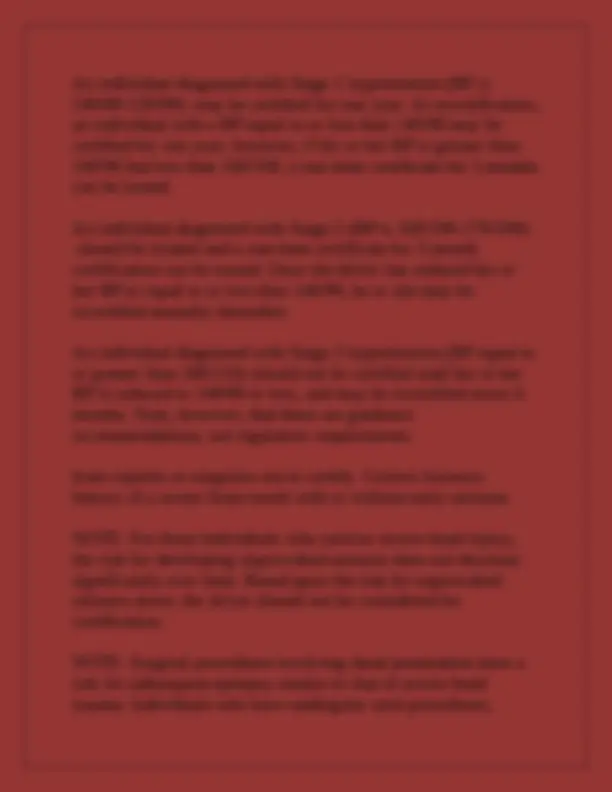
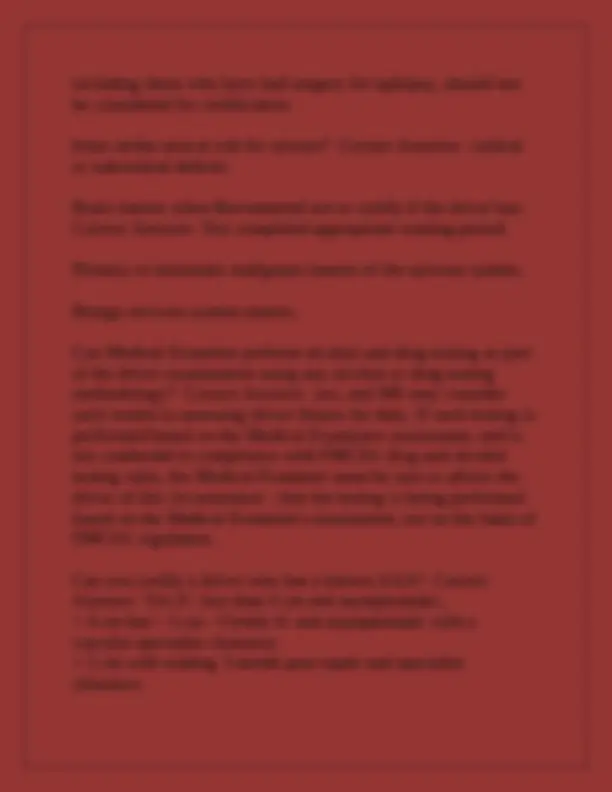
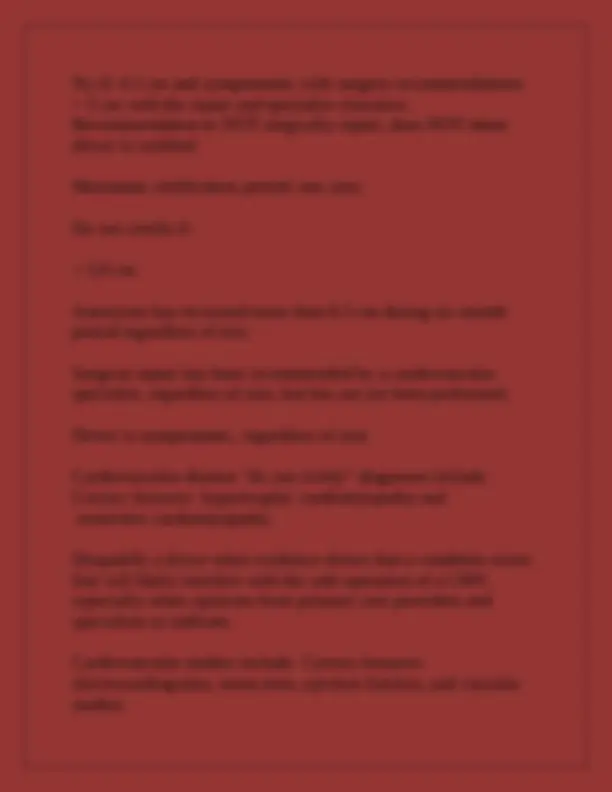
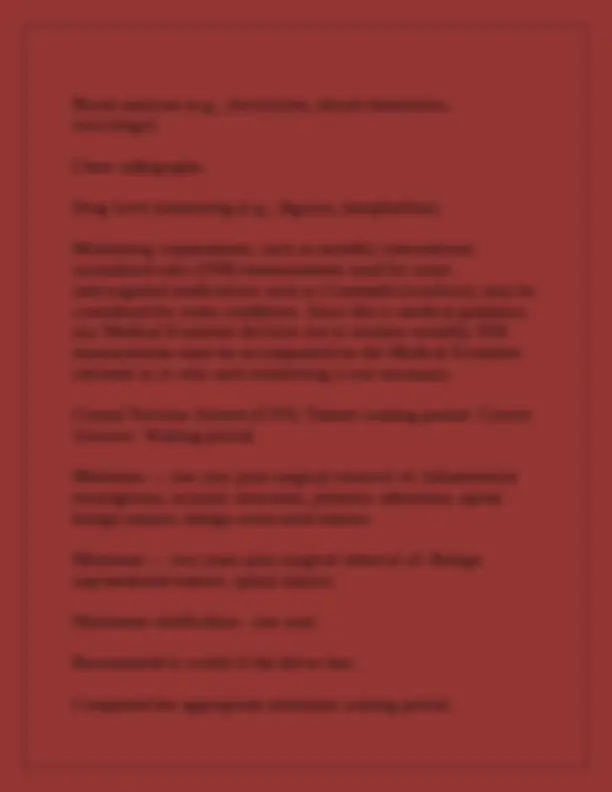
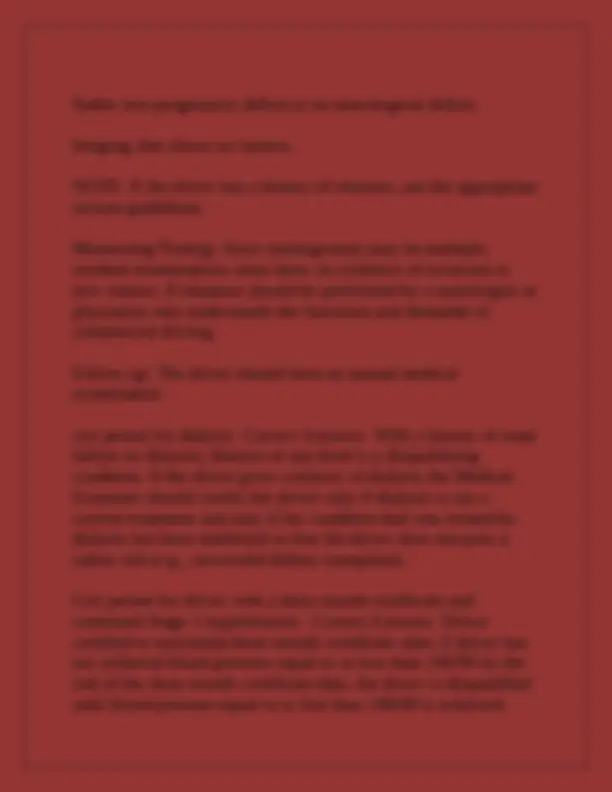
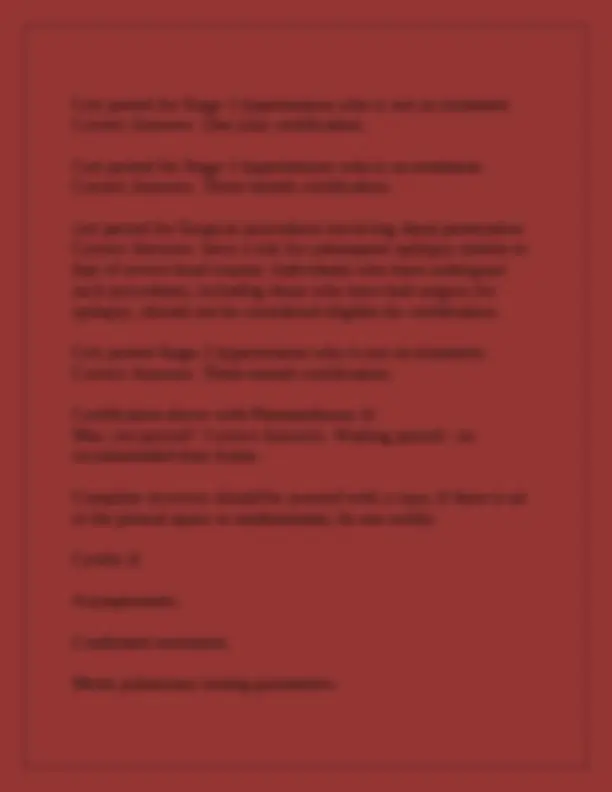
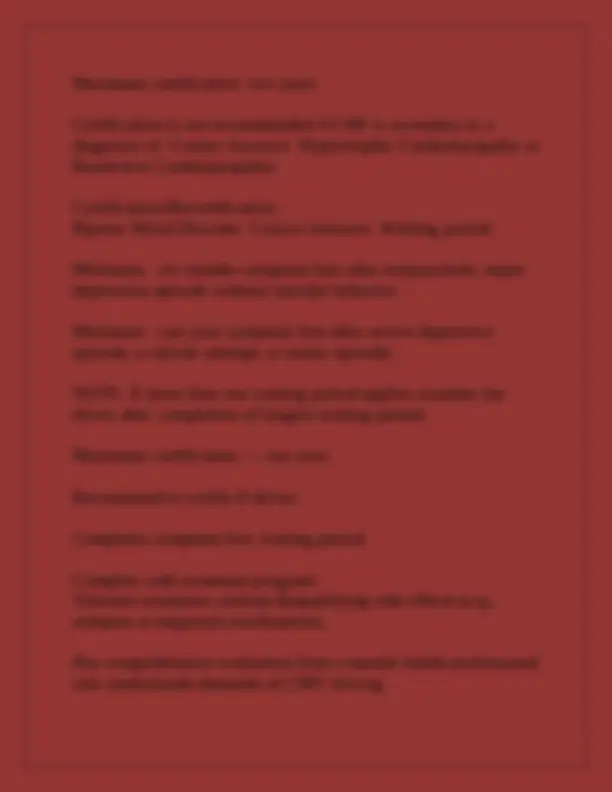
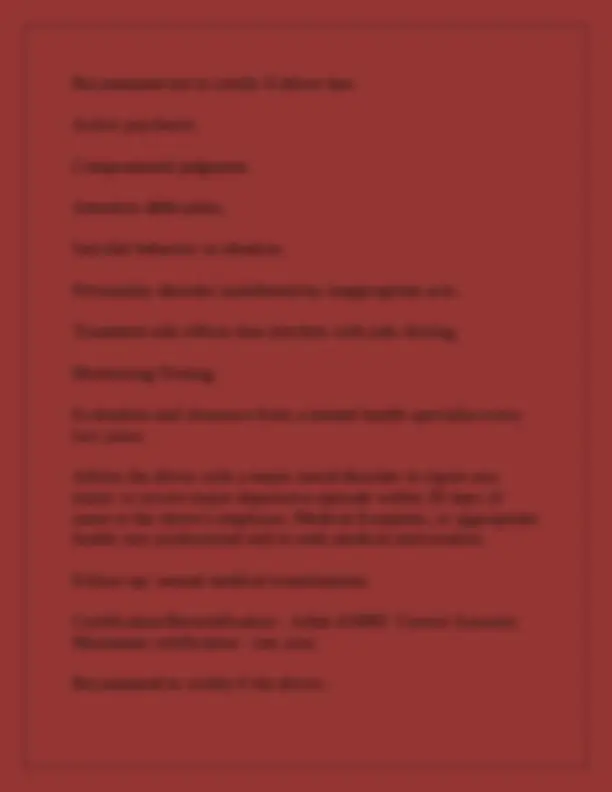
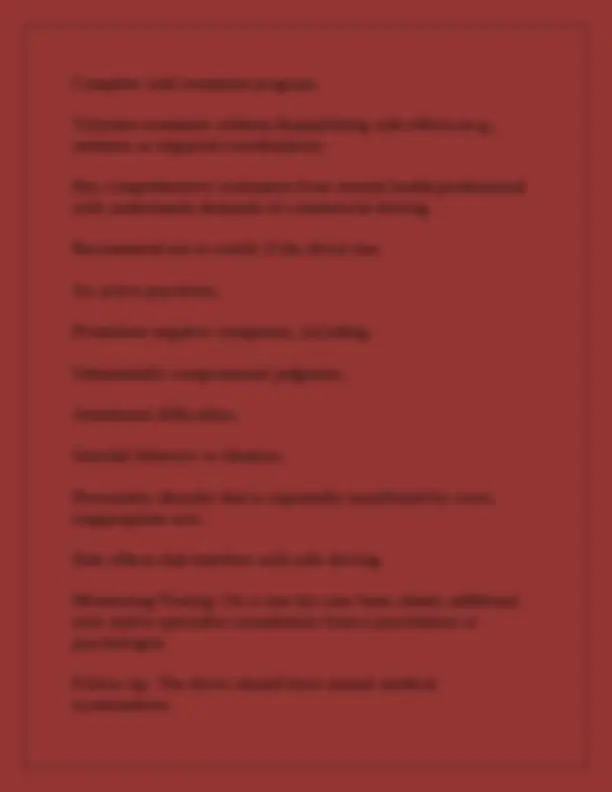
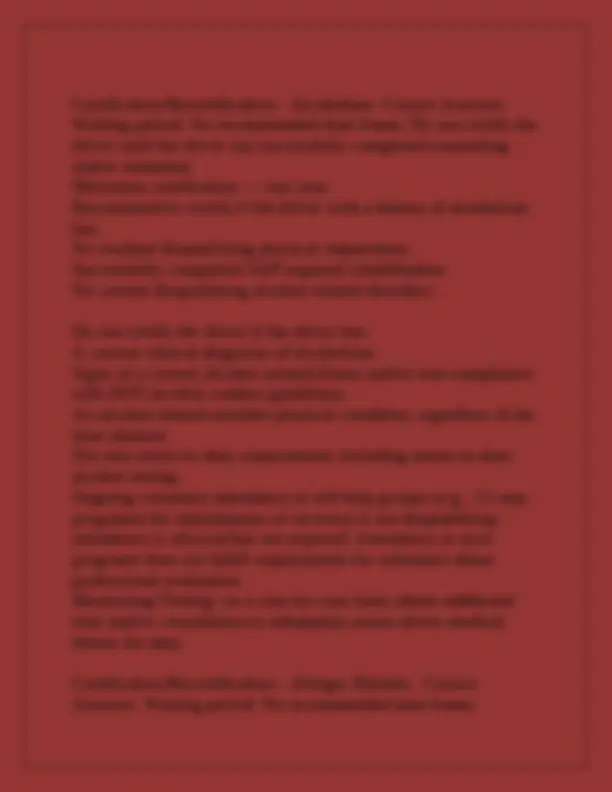
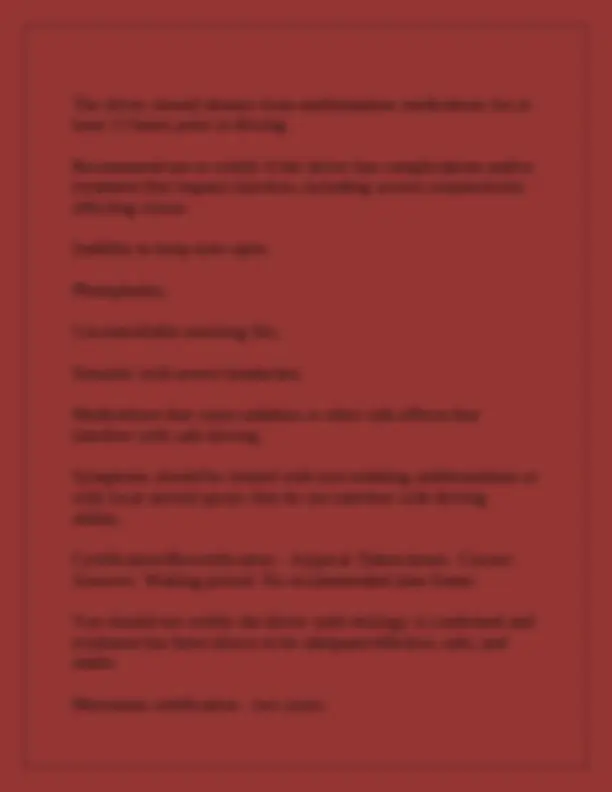
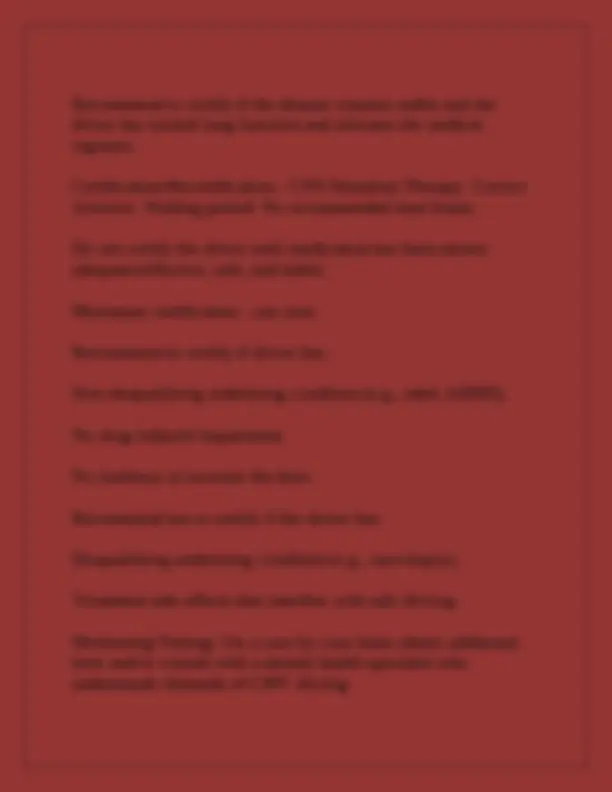
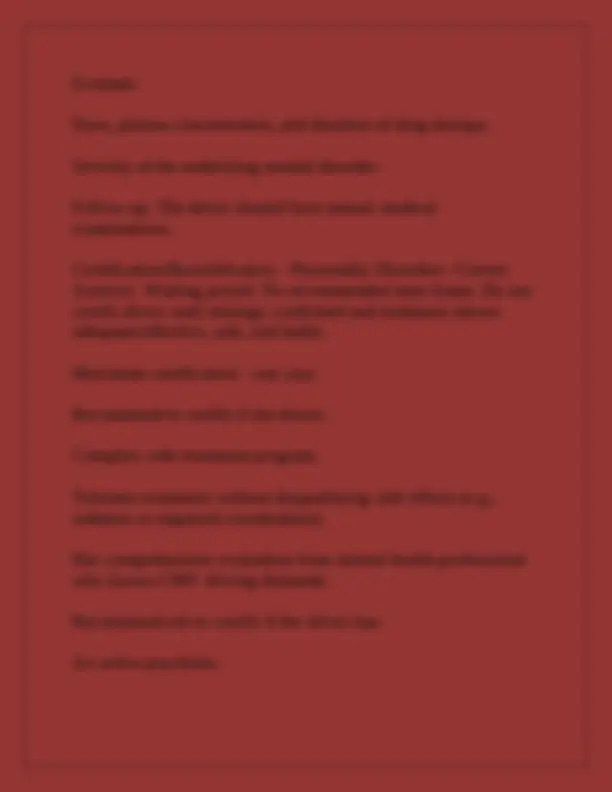
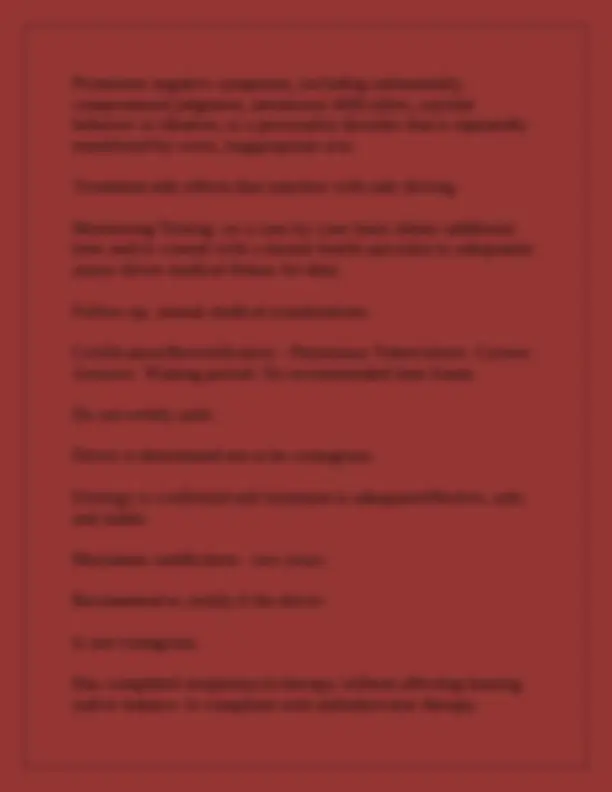
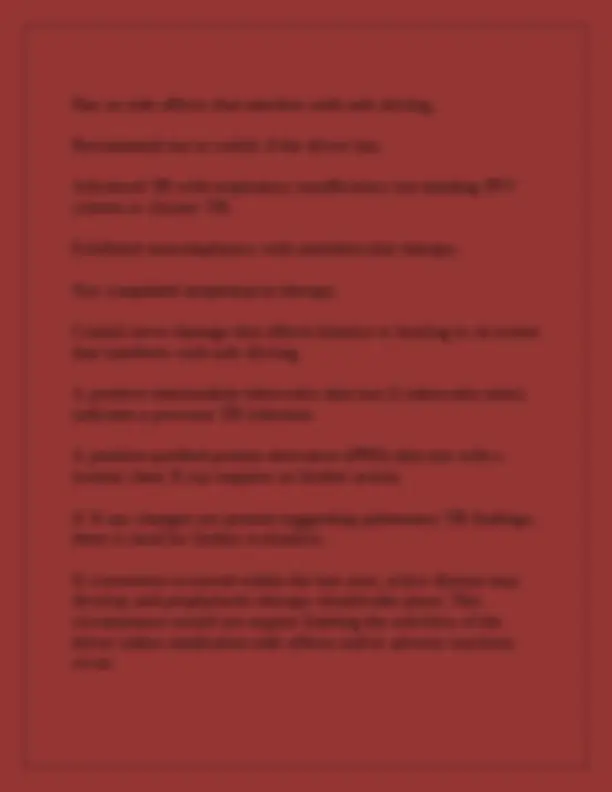
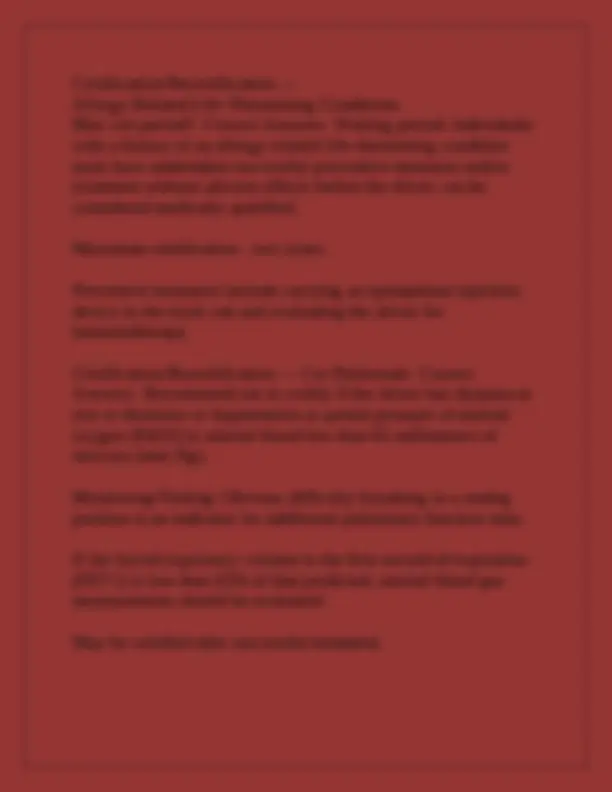
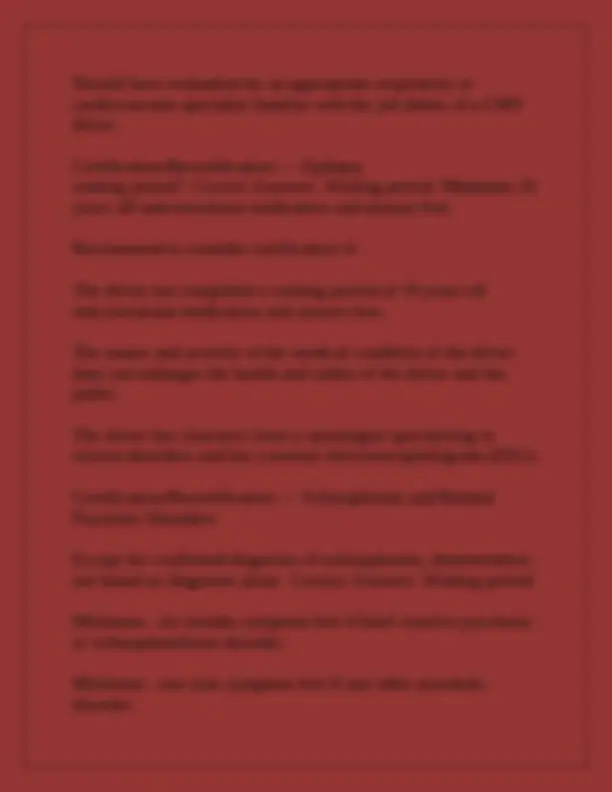
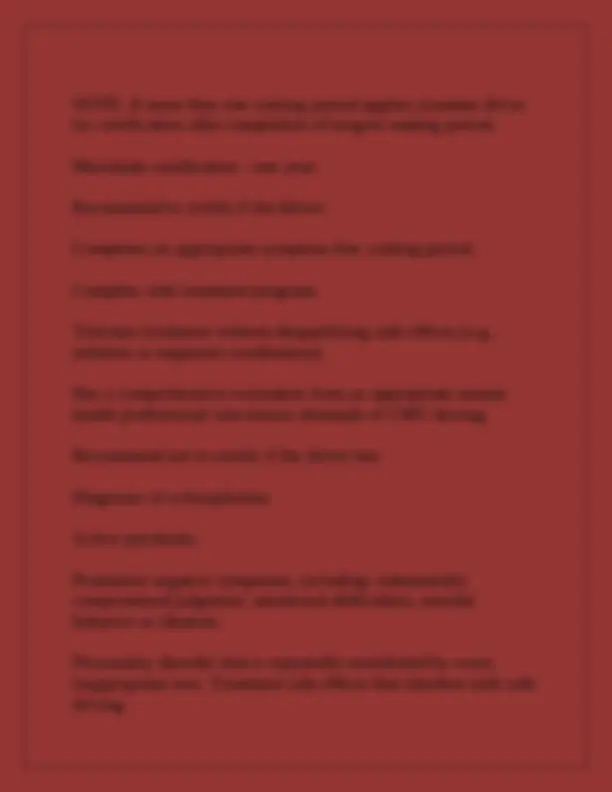
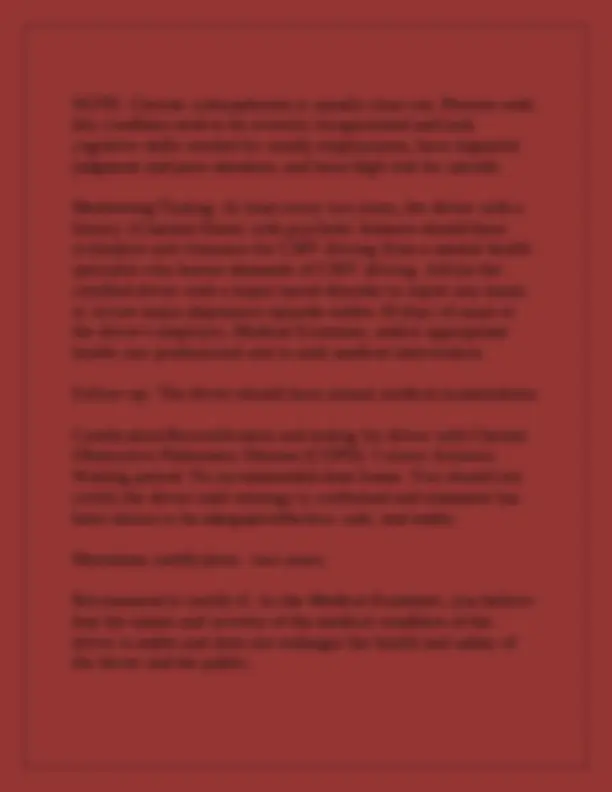
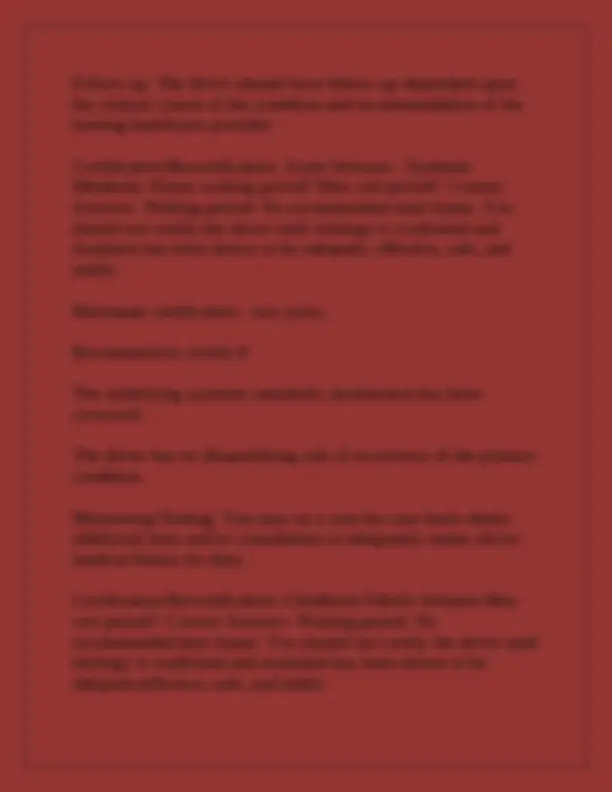
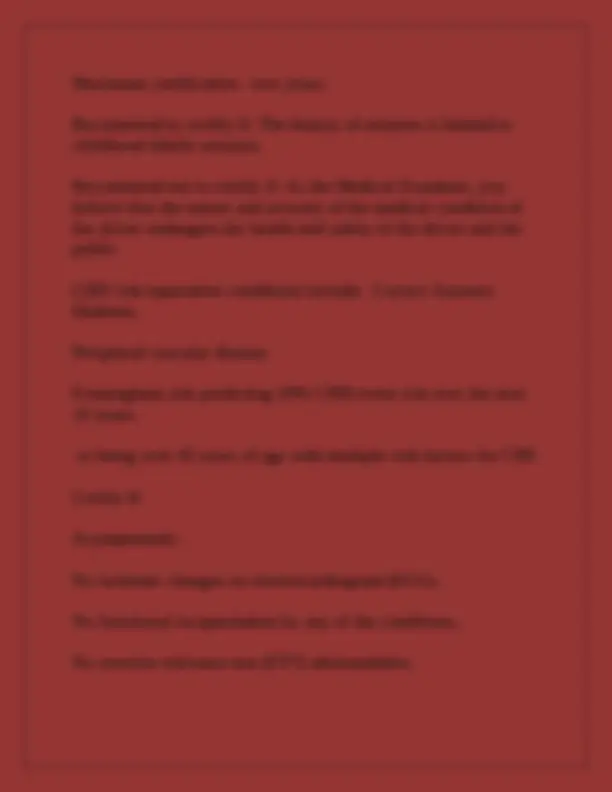
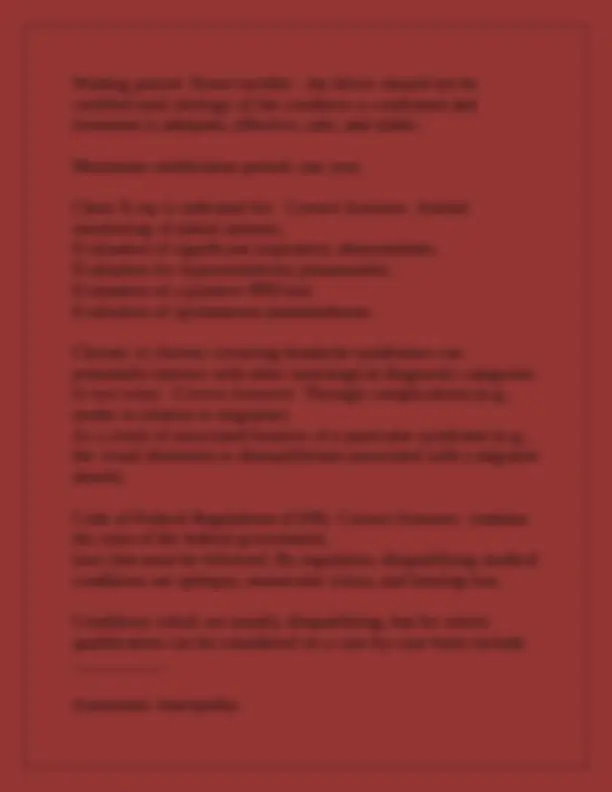
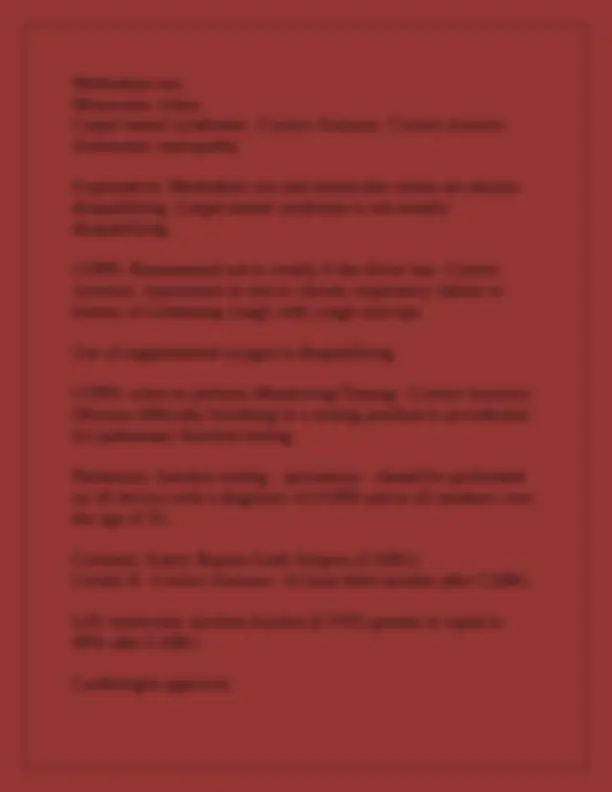
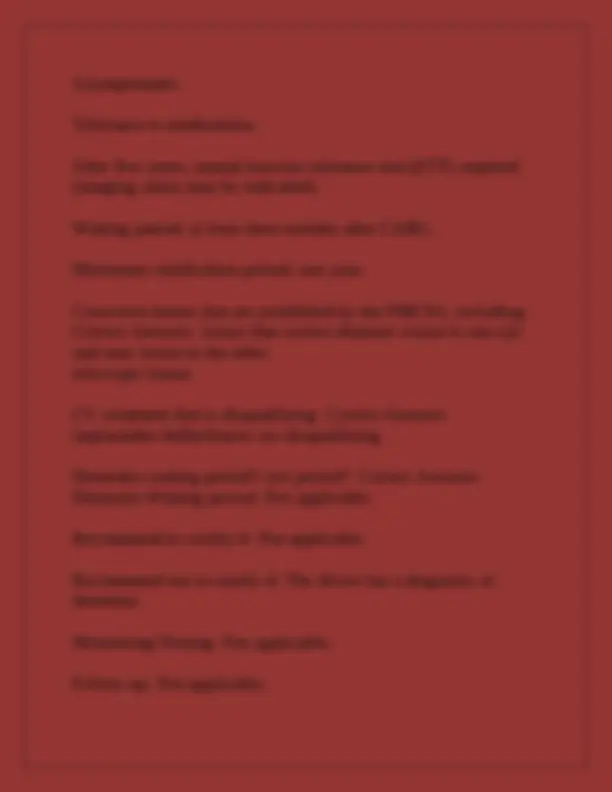

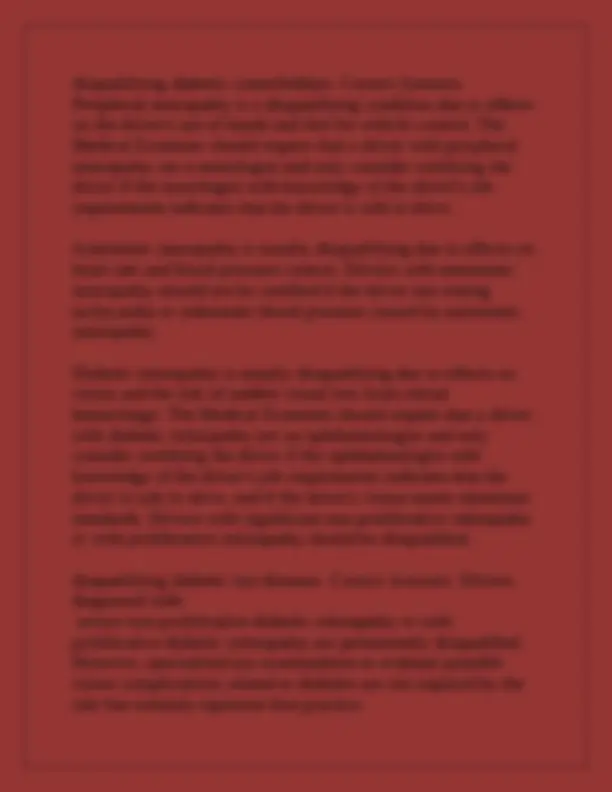
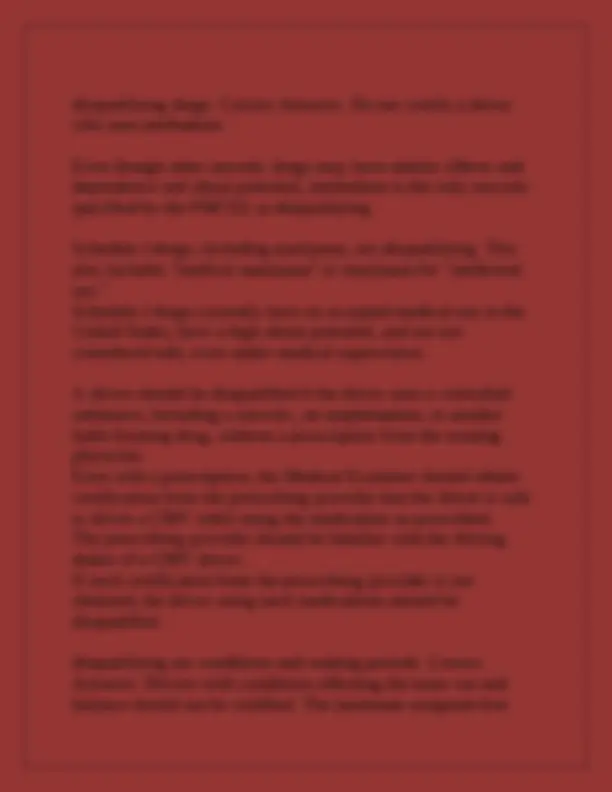
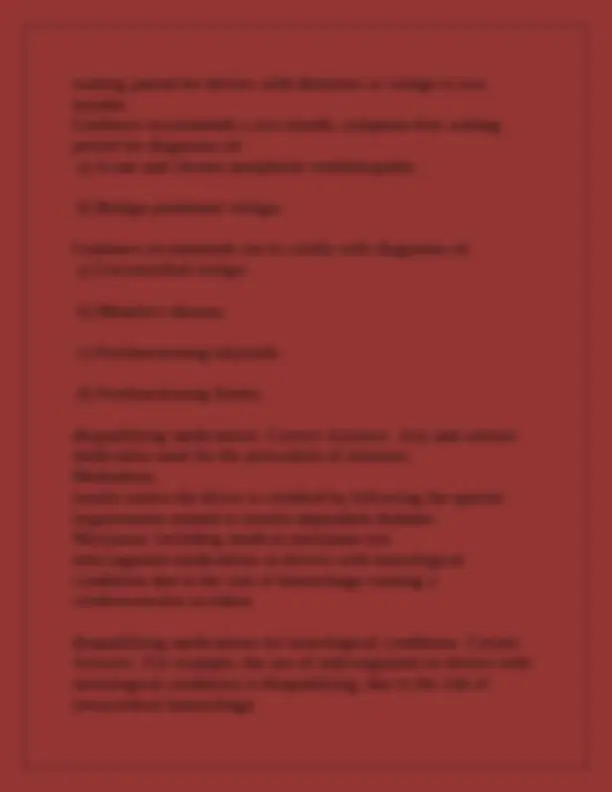
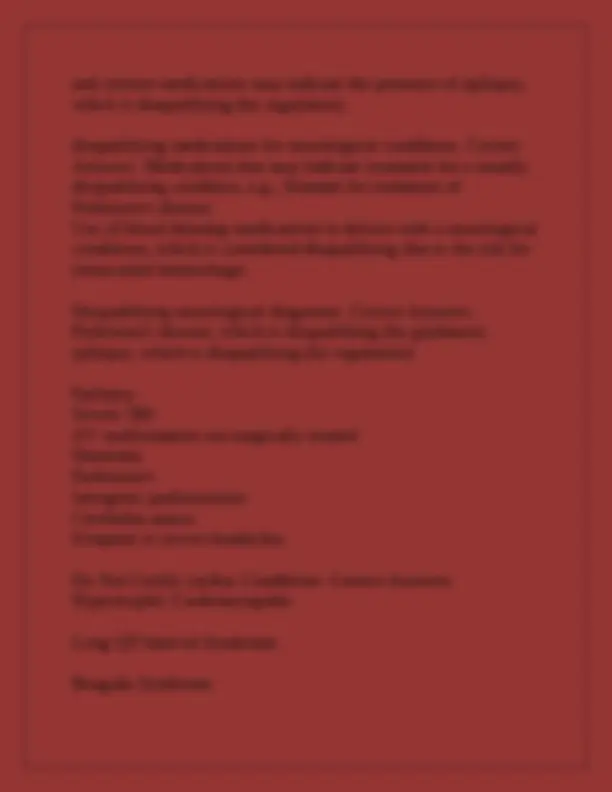
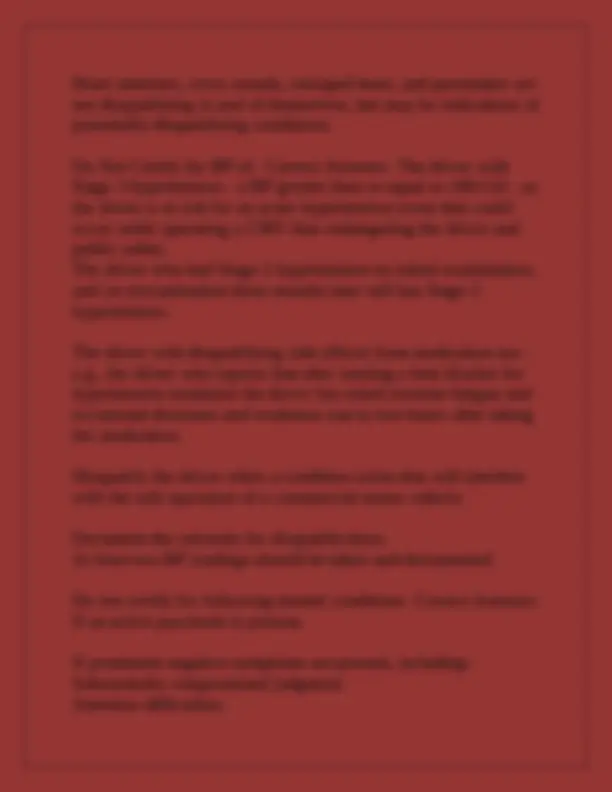
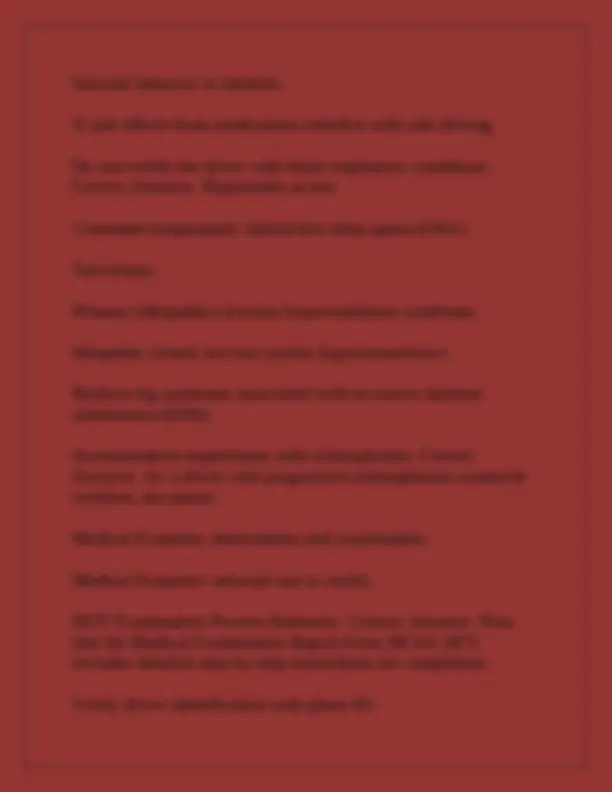
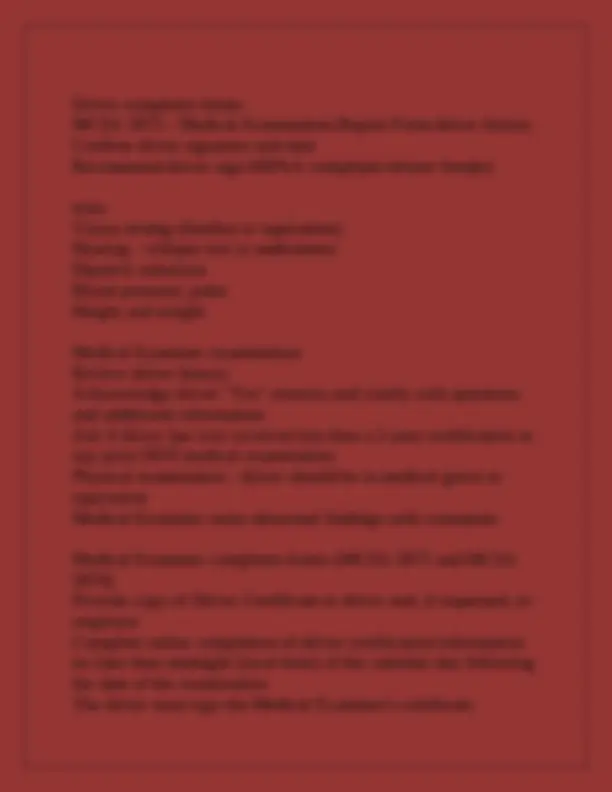
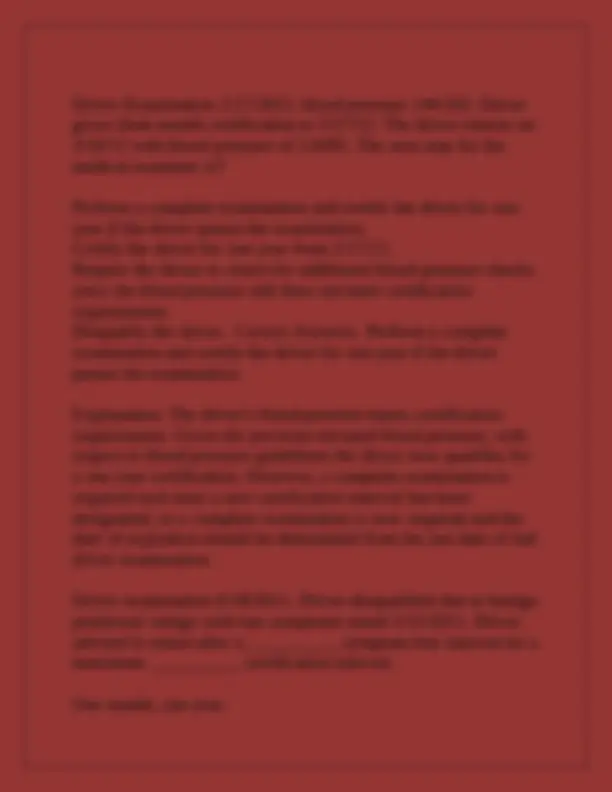
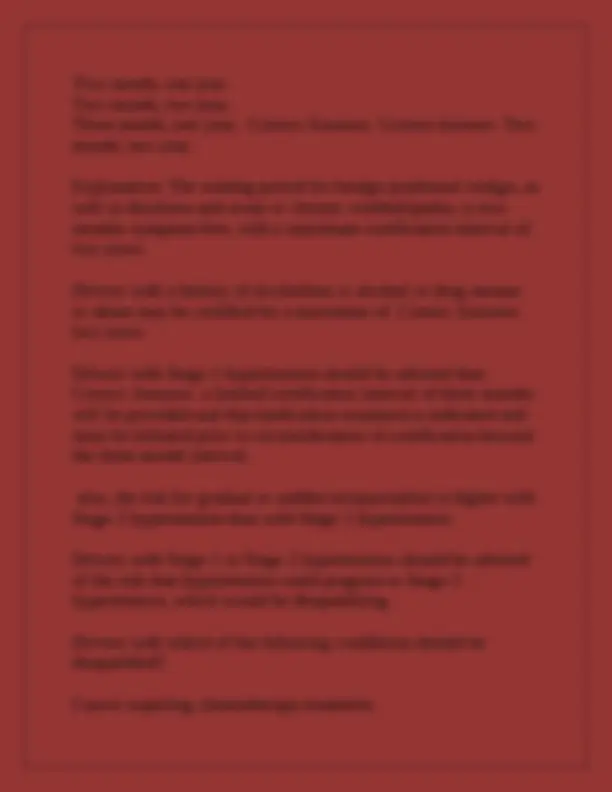
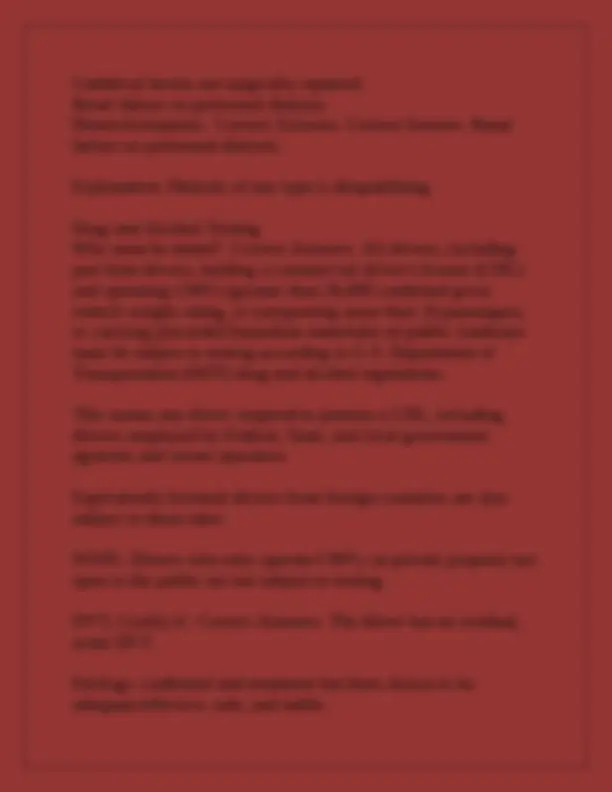
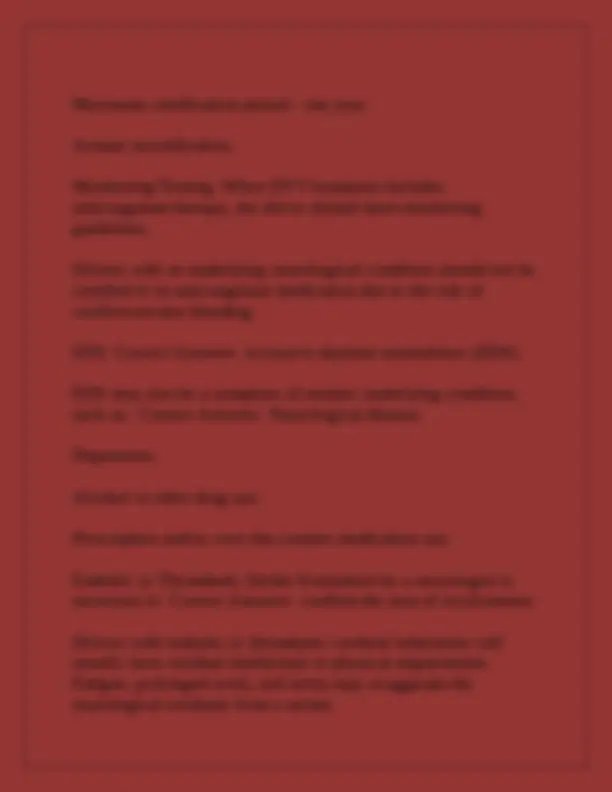
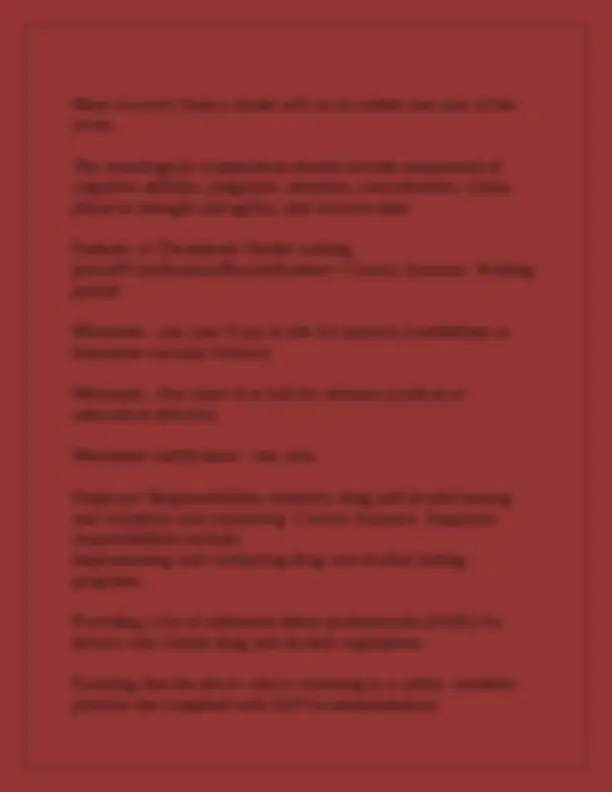
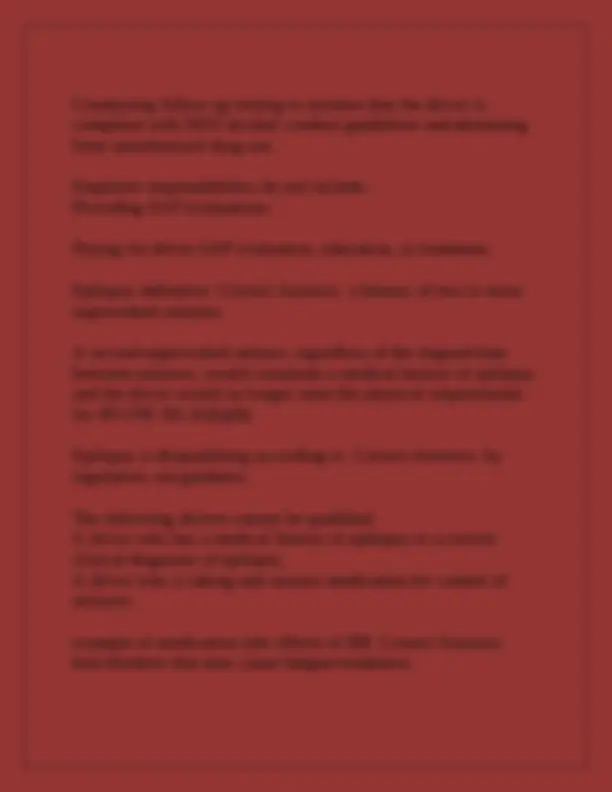
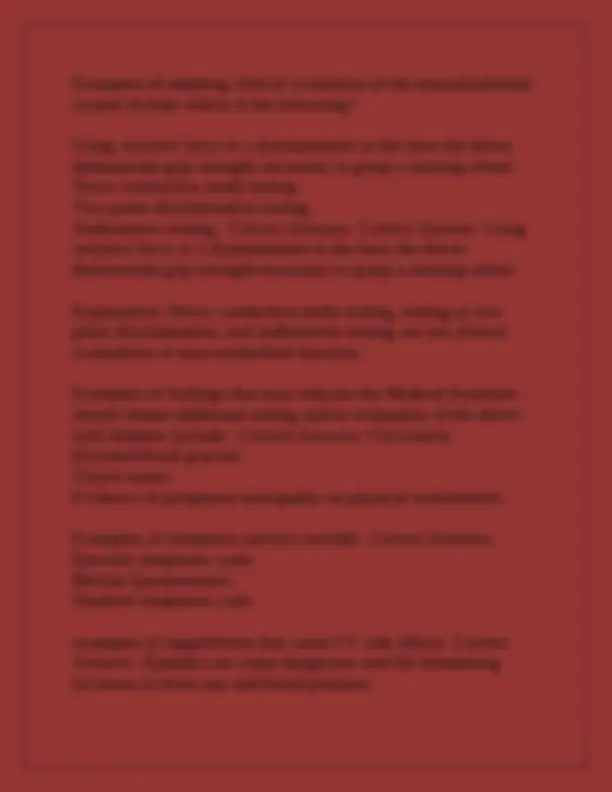
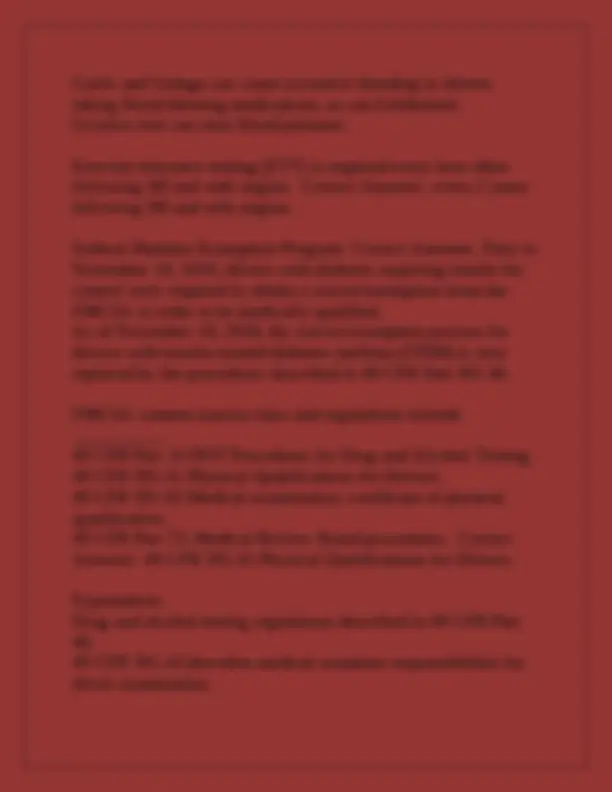
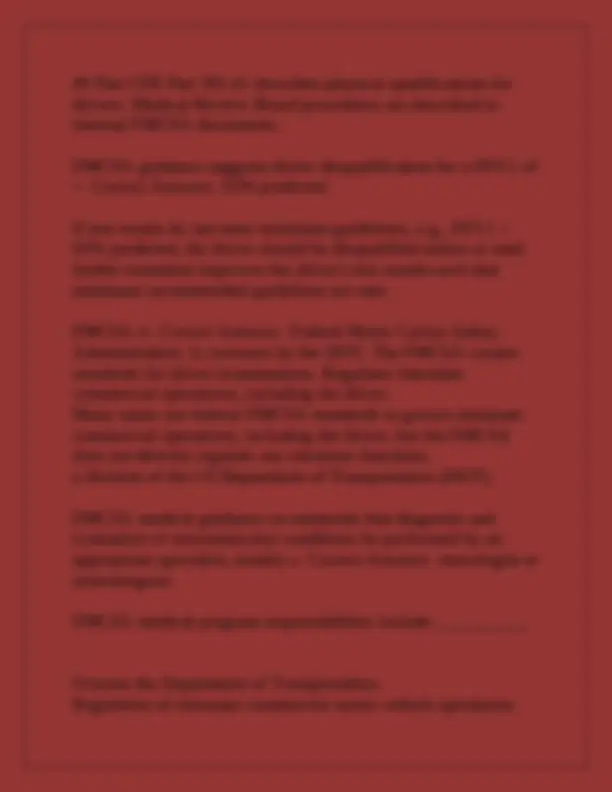
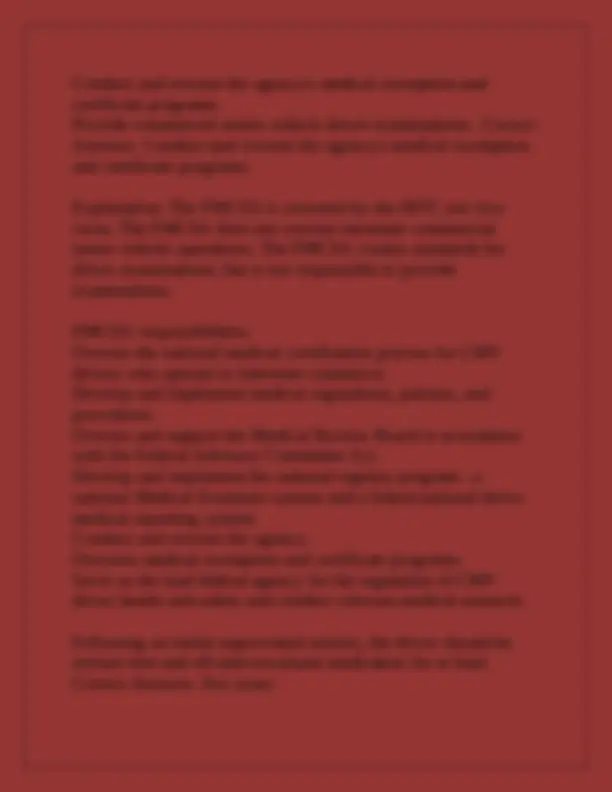
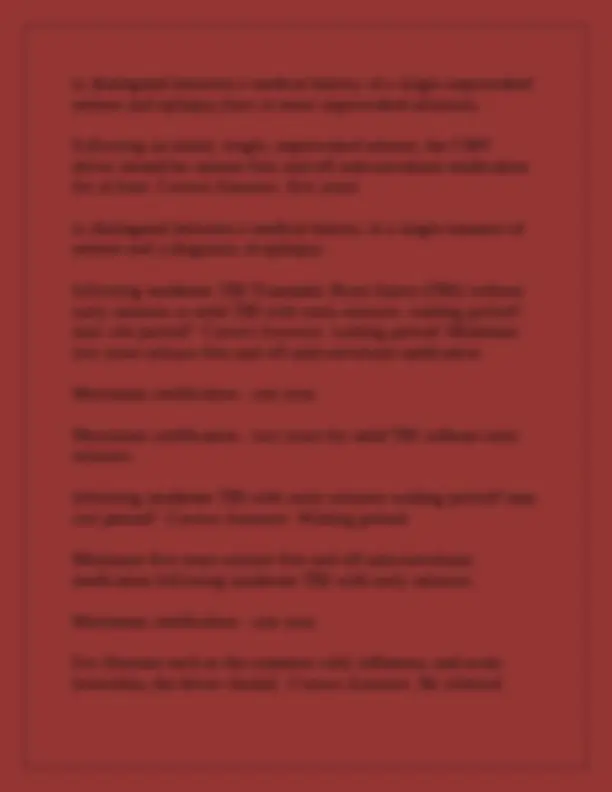
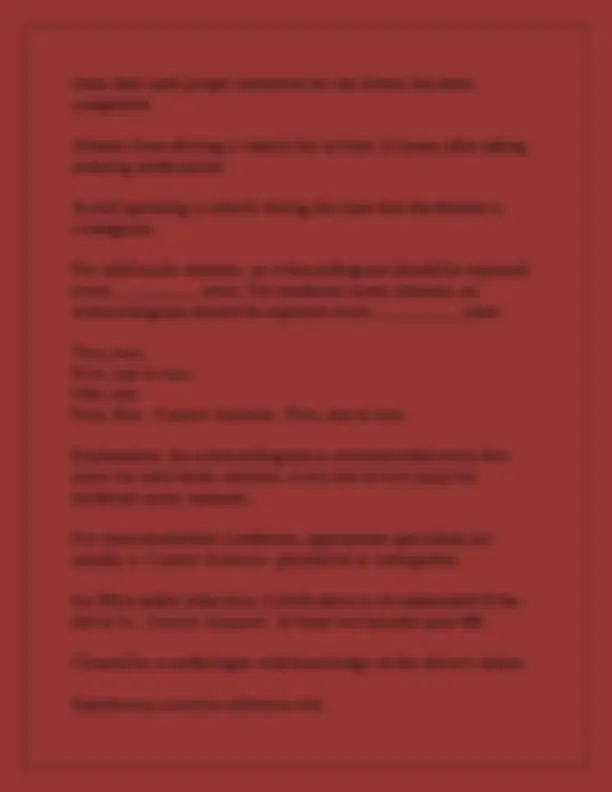
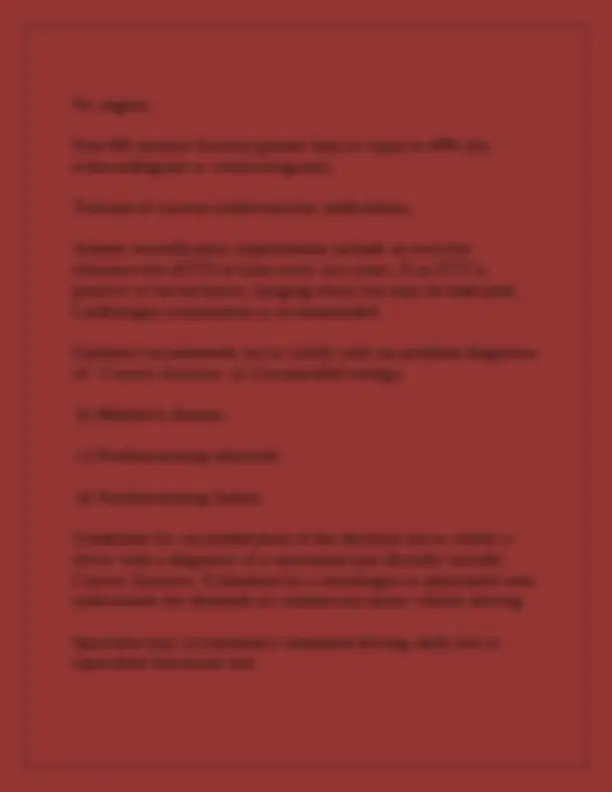
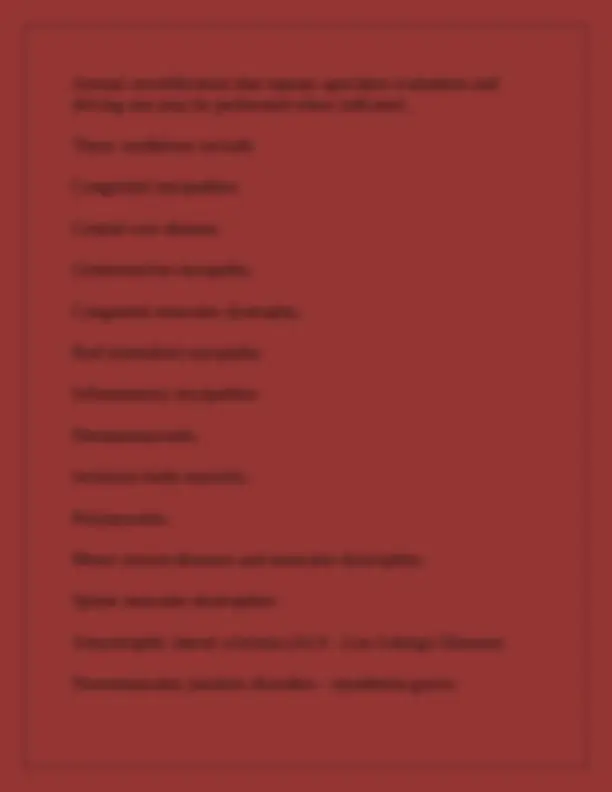
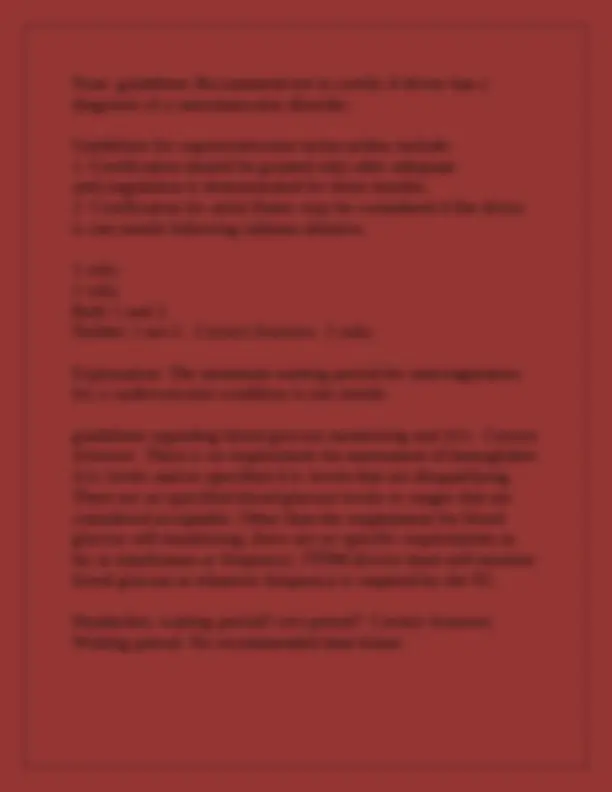
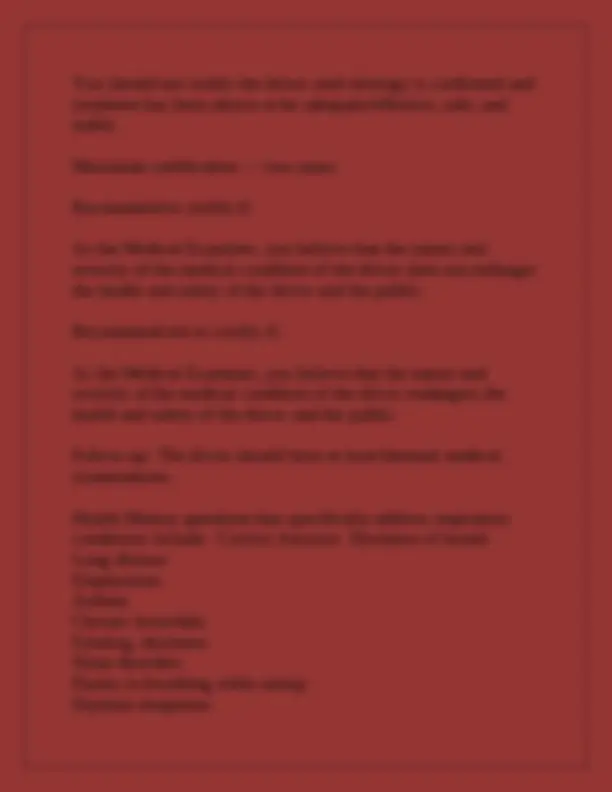
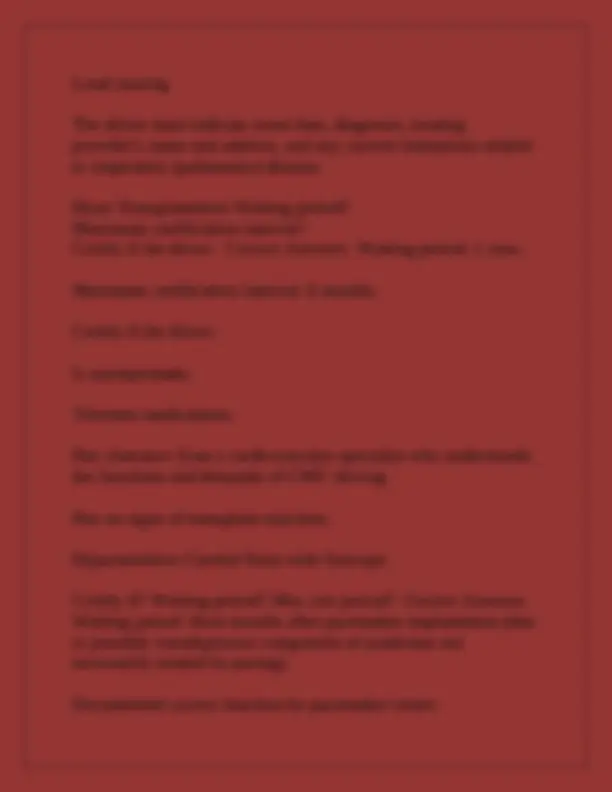
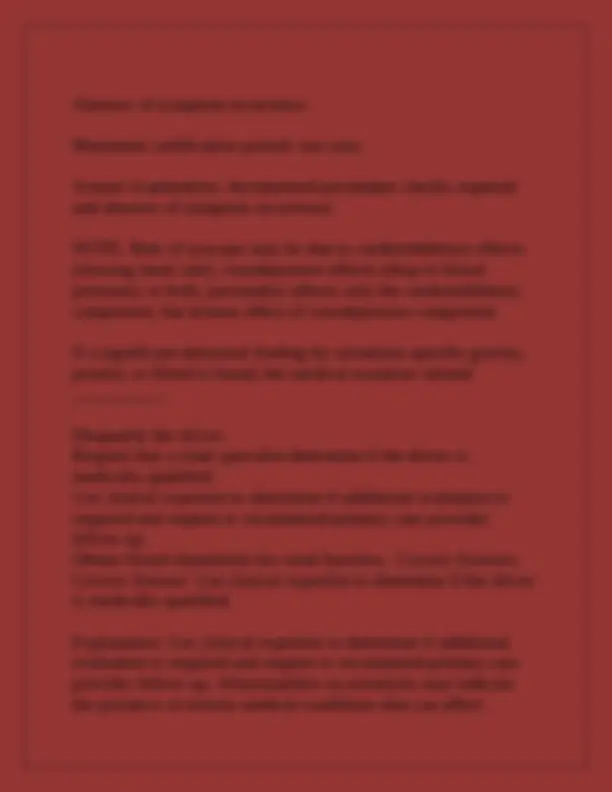
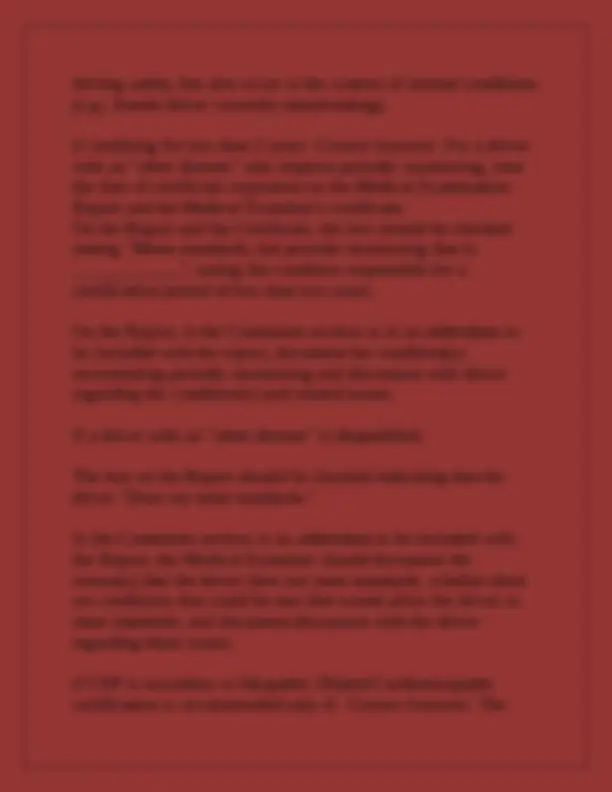
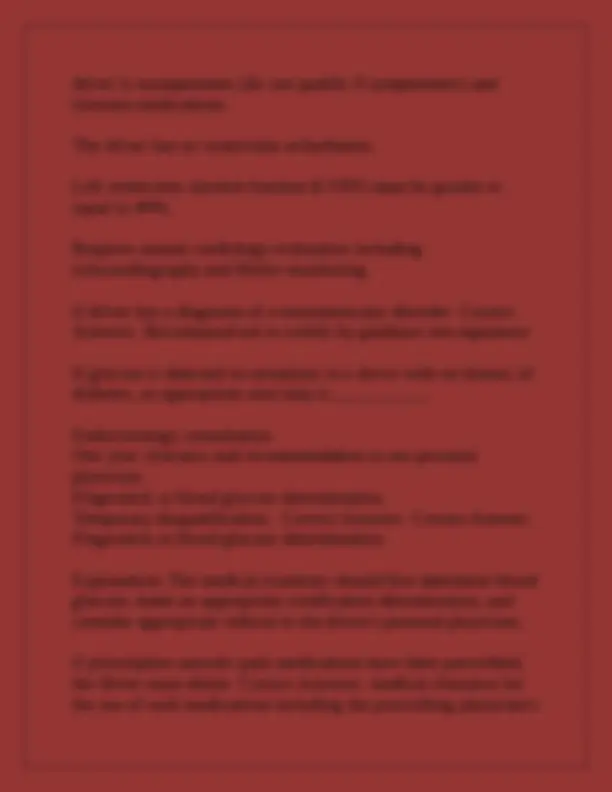
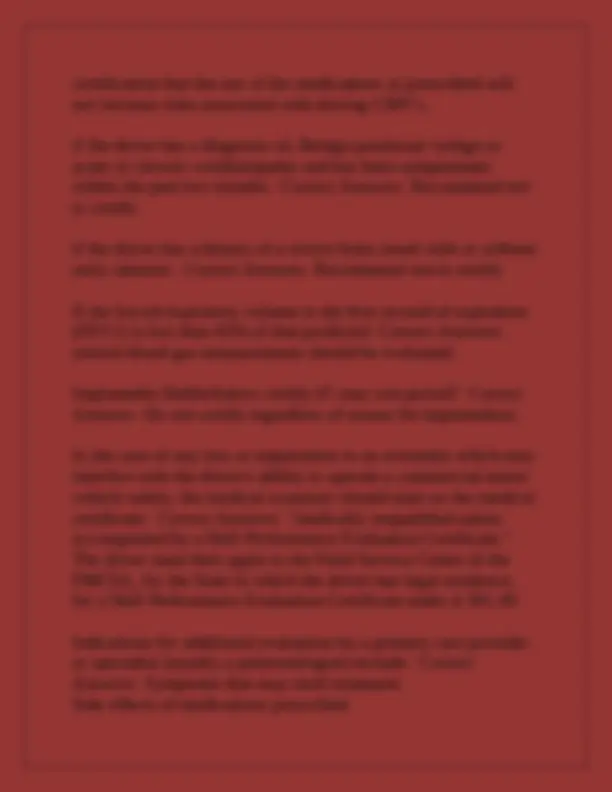
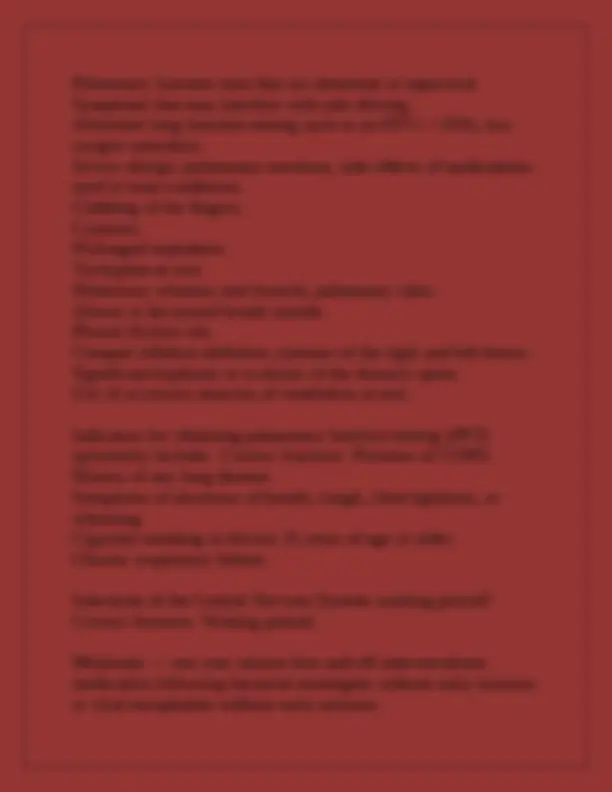
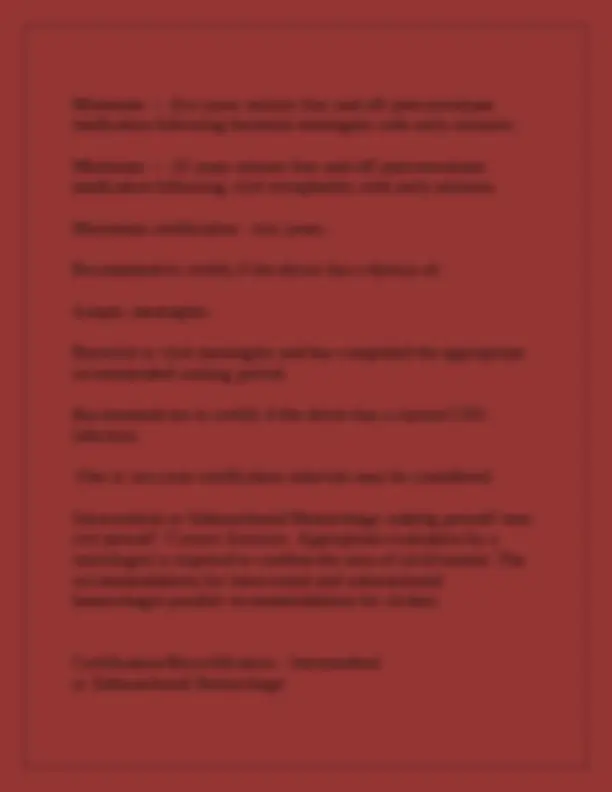
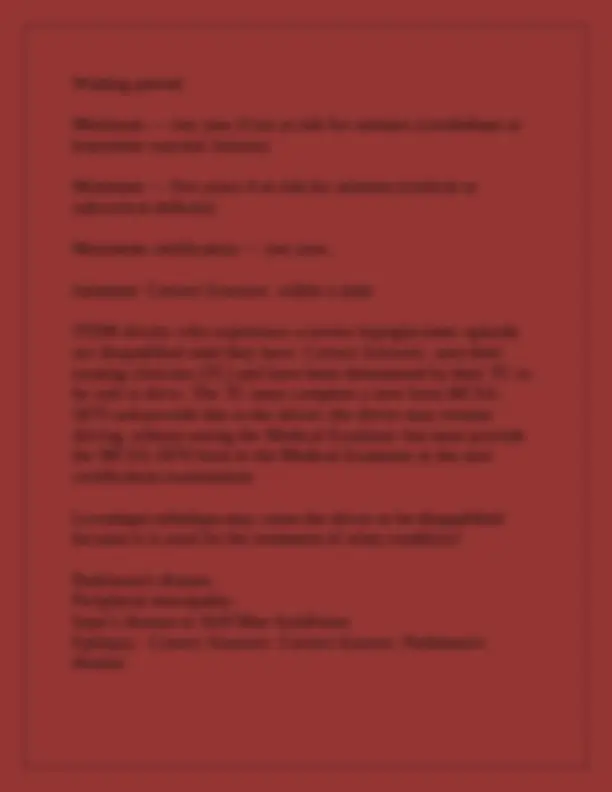
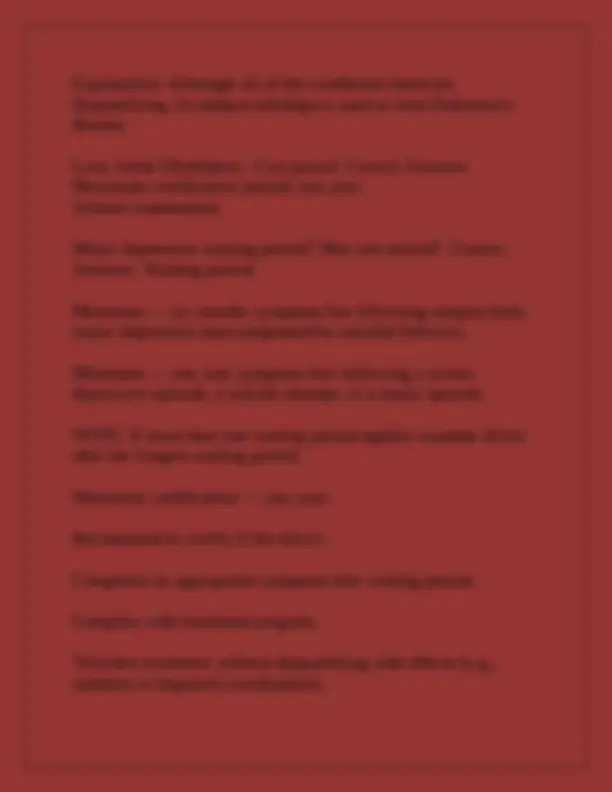
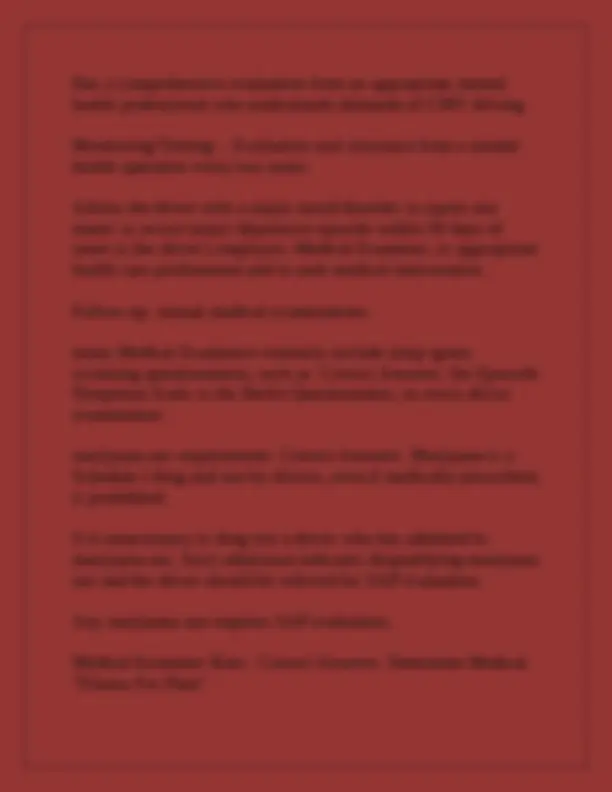
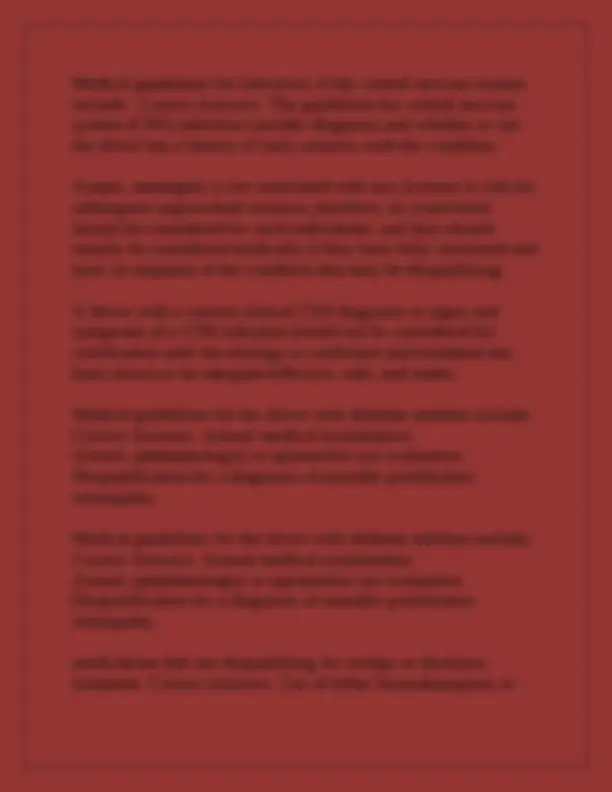
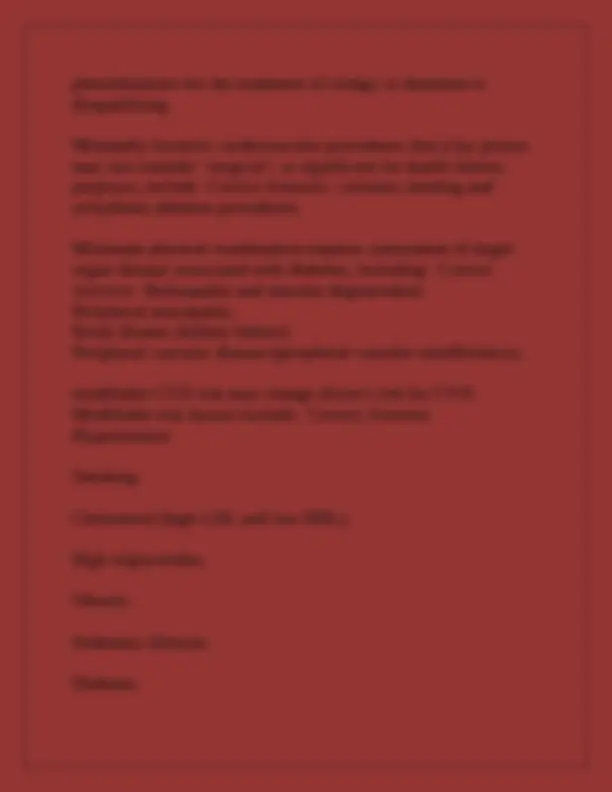

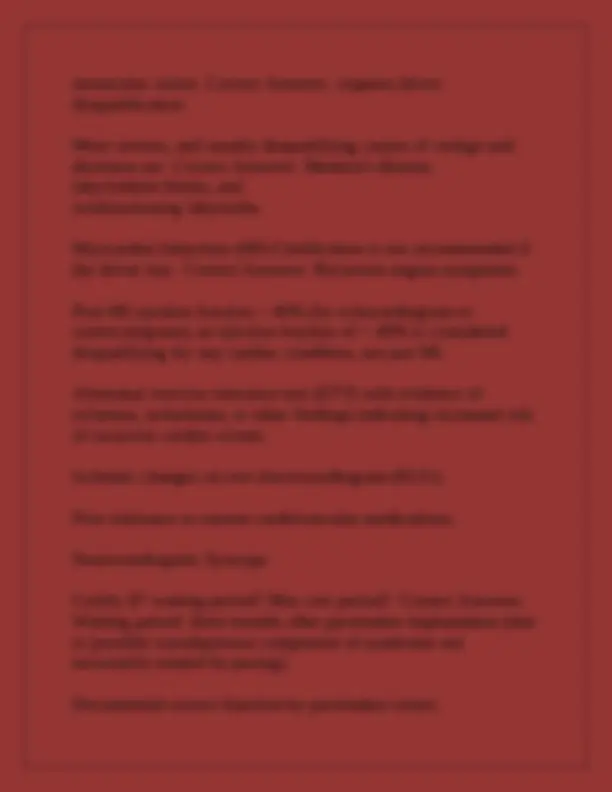
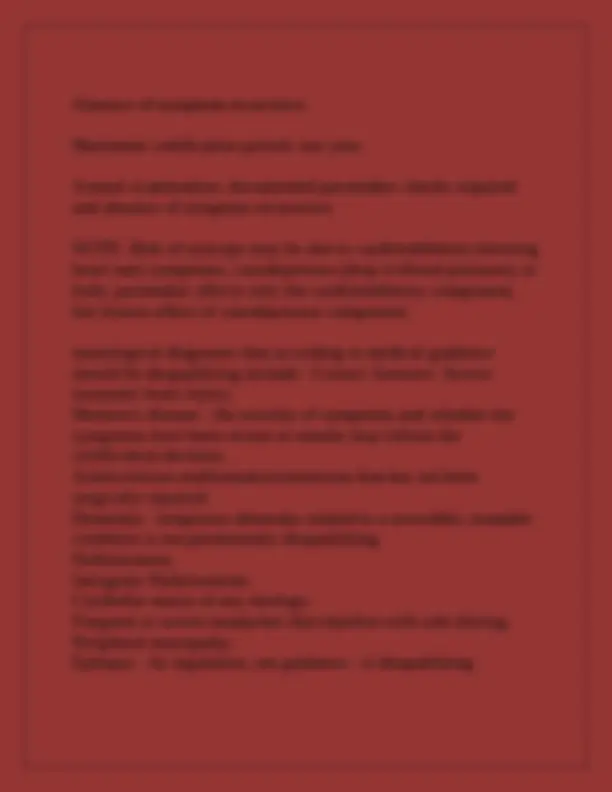
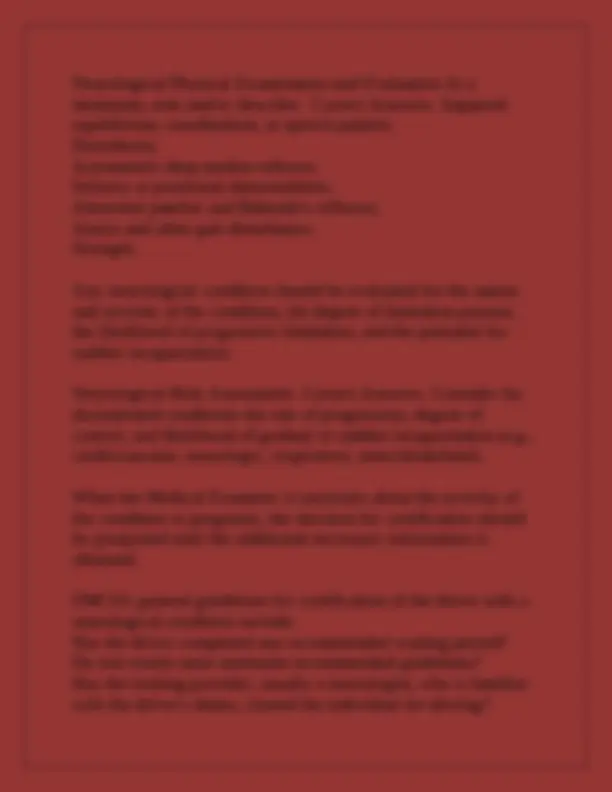
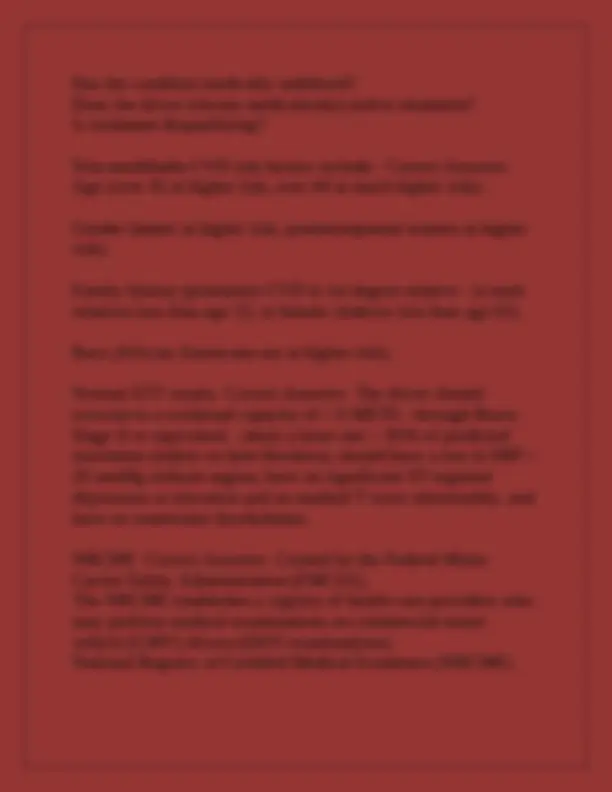
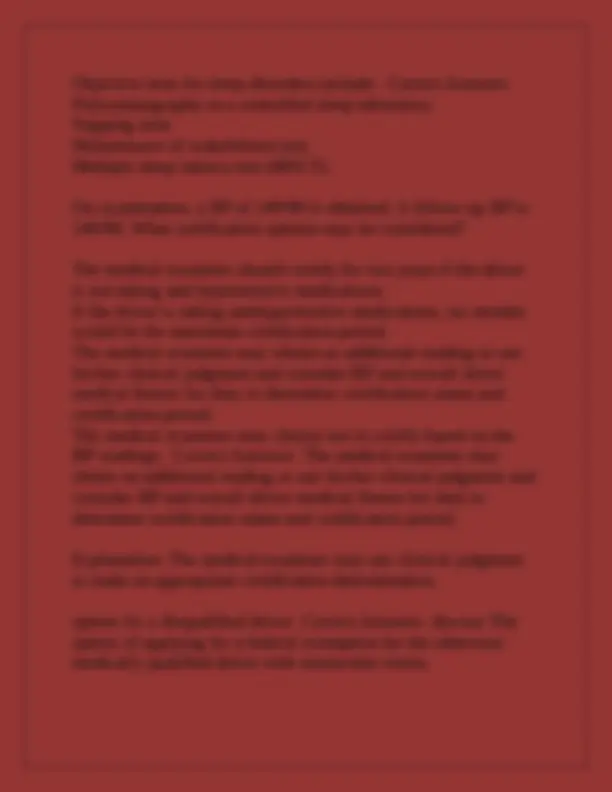
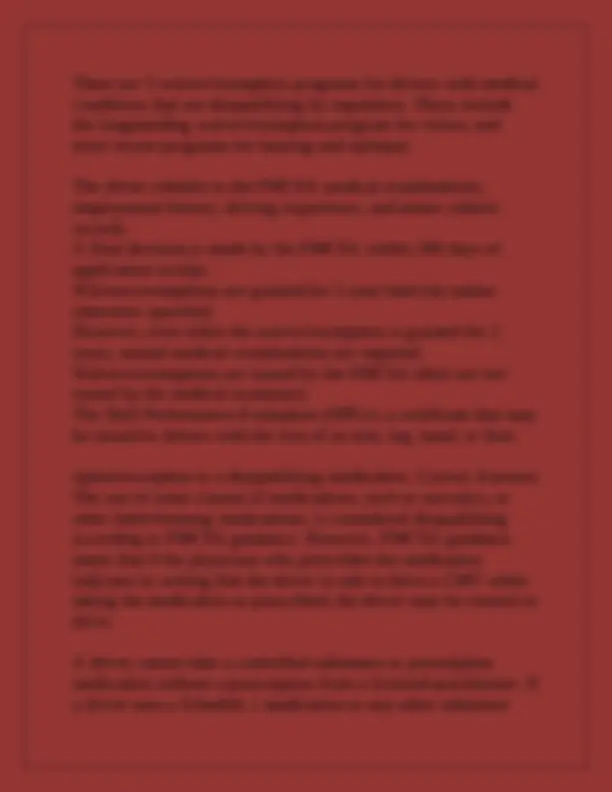
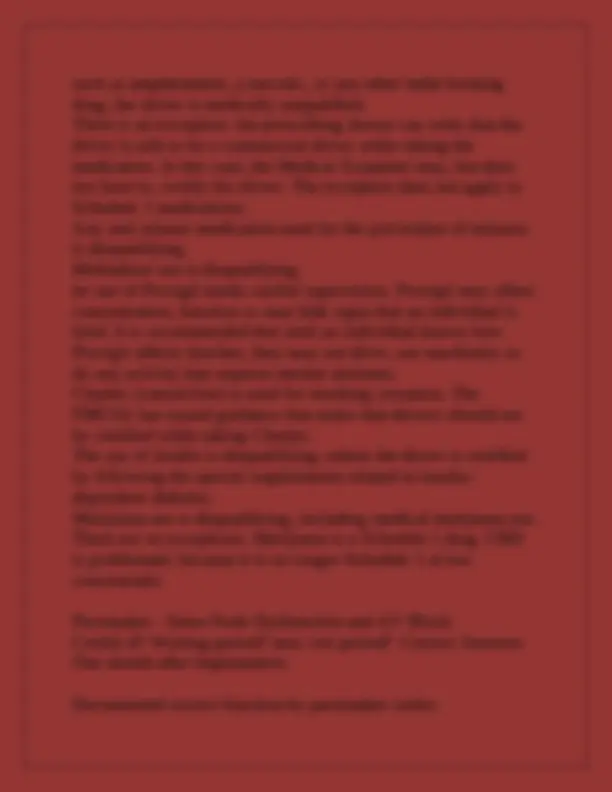
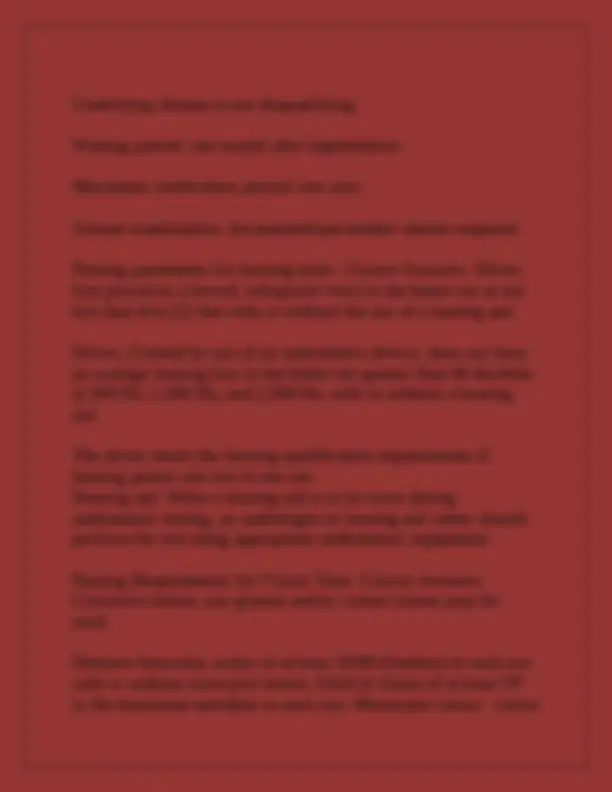
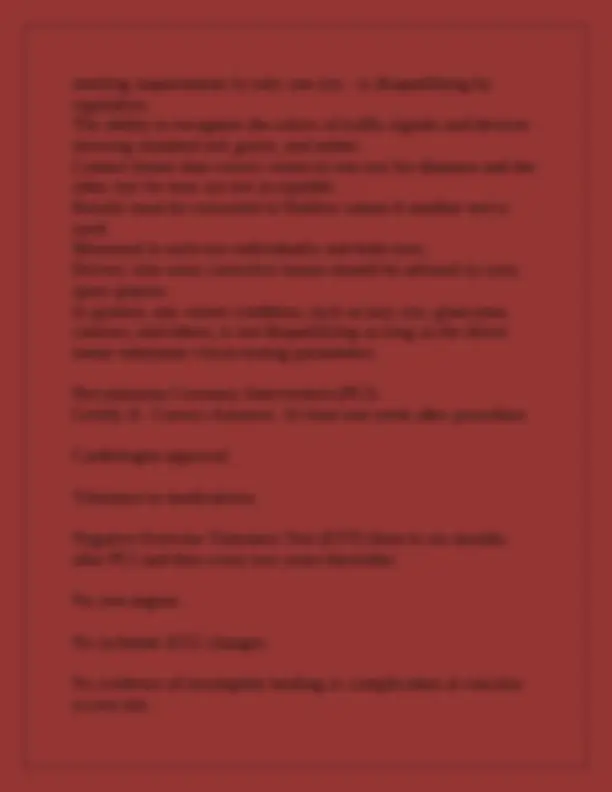
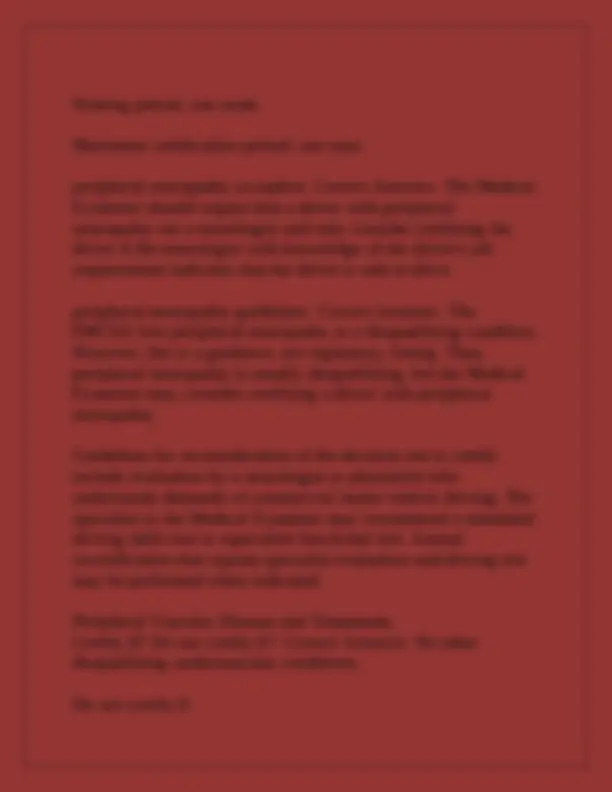
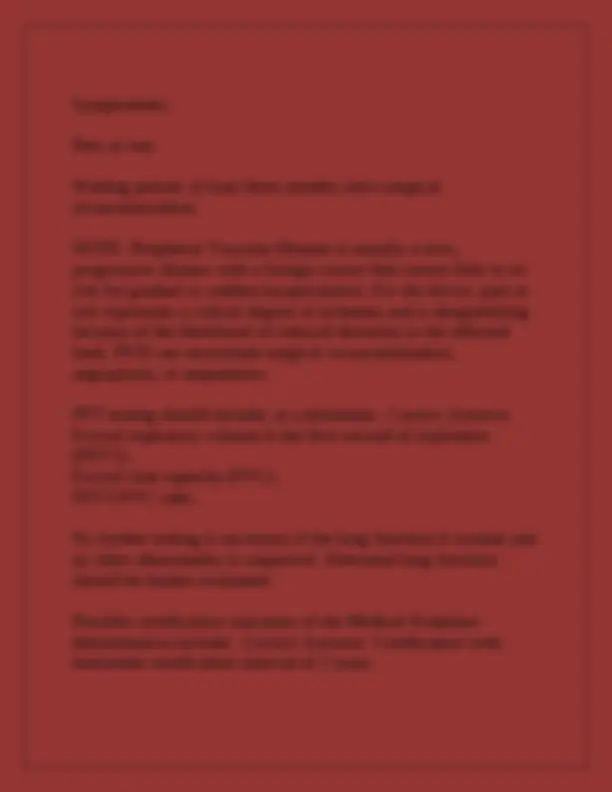

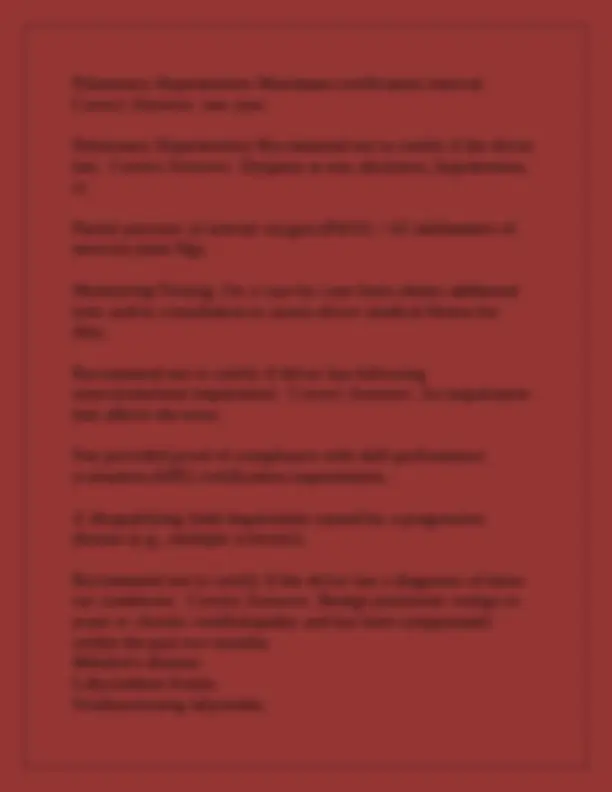
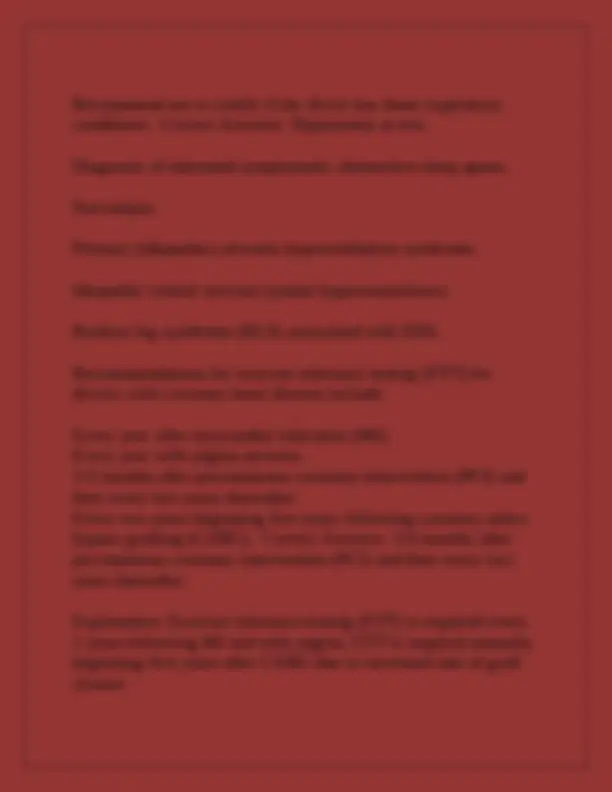
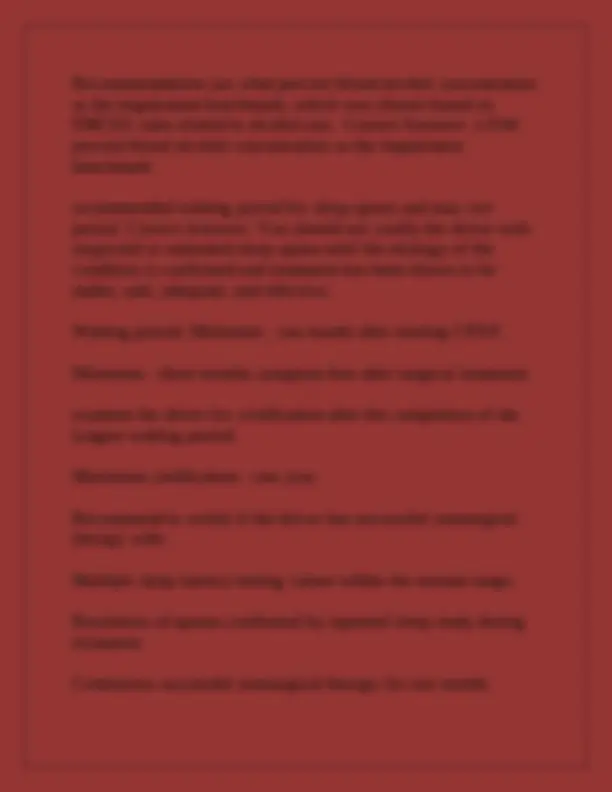
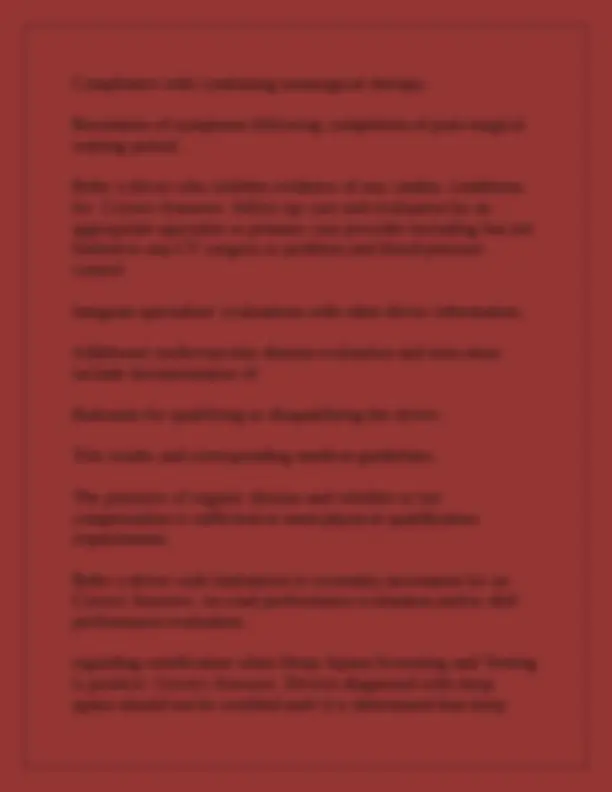
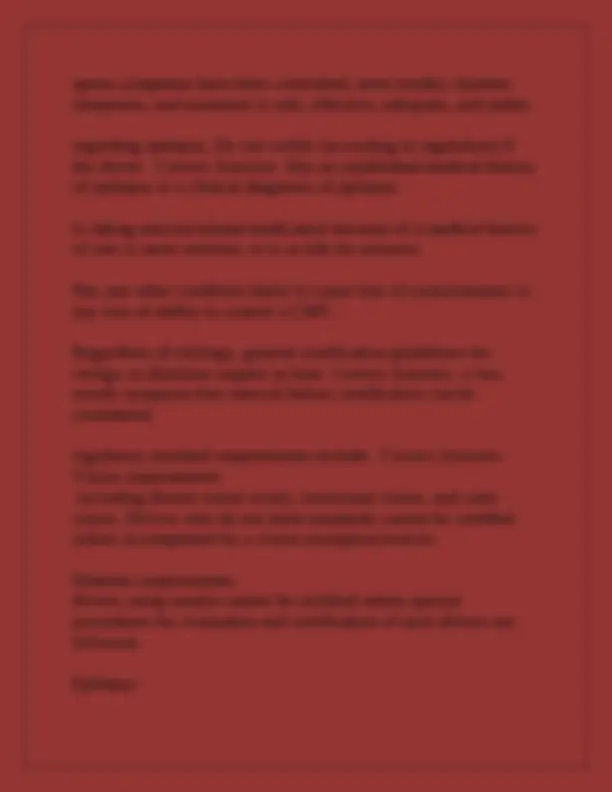
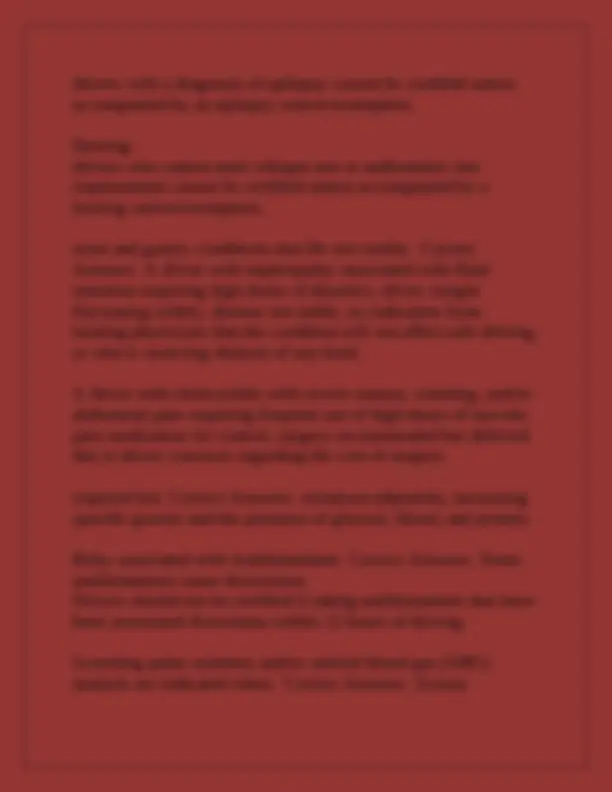
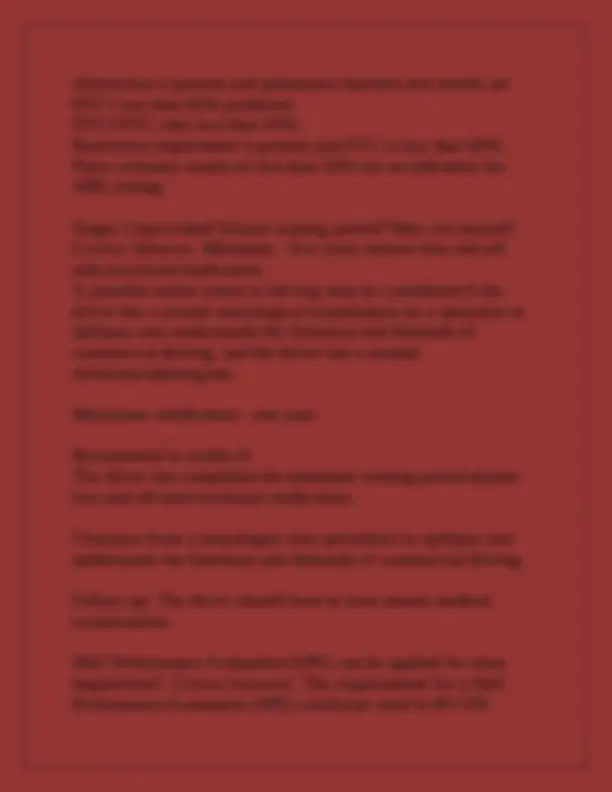
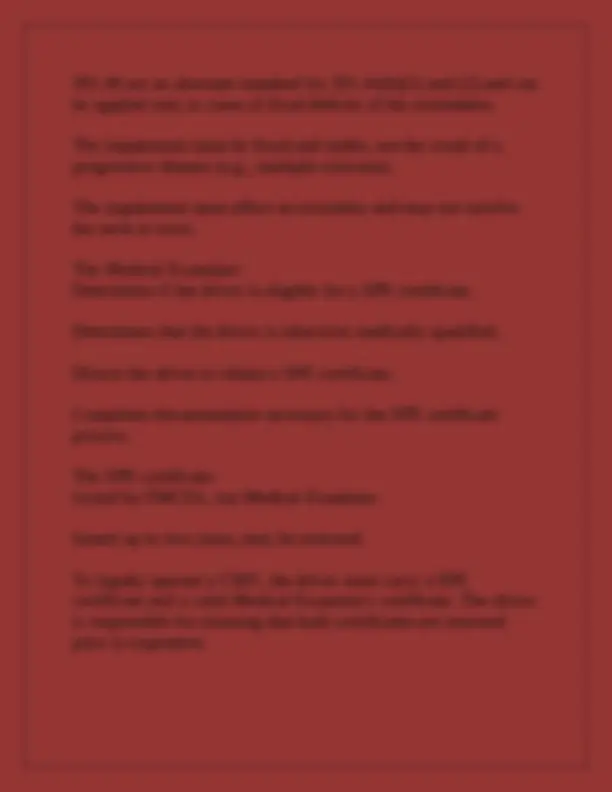


Study with the several resources on Docsity

Earn points by helping other students or get them with a premium plan


Prepare for your exams
Study with the several resources on Docsity

Earn points to download
Earn points by helping other students or get them with a premium plan
Community
Ask the community for help and clear up your study doubts
Discover the best universities in your country according to Docsity users
Free resources
Download our free guides on studying techniques, anxiety management strategies, and thesis advice from Docsity tutors
2025 DOT: Comprehensive Review for NRCME Exam Questions With Complete Solutions
Typology: Exams
1 / 147

This page cannot be seen from the preview
Don't miss anything!





























































































2025 DOT: Comprehensive Review for NRCME Exam Questions With Complete Solutions "Lone atrial fibrillation" Correct Answers is atrial fibrillation in the absence of other risk factors for stroke, such as previous stroke or TIA, diabetes mellitus, hypertension, heart failure, age greater than 75 years, or valvular heart disease. ___ is the only anti-thrombotic therapy required for patients with lone atrial fibrillation.
Only if the driver wears prescription glasses which provide the same correction as the contact lenses. FMCSA guidance indicates that a driver should not be certified under these circumstances. Only by federal exemption. The driver is always certifiable under these conditions. Correct Answers FMCSA guidance indicates that a driver should not be certified under these circumstances. Explanation: FMCSA guidance indicates that contact lenses that correct one eye for distance and one eye for near vision are not acceptable. A driver with a history of bacterial meningitis with early seizures or a single unprovoked seizure requires a waiting period of __________ seizure free and off anticonvulsant medications. One year. Two years. Five years. Ten years. Correct Answers Correct Answer: Five years. Explanation: The waiting period for a history of bacterial meningitis with early seizures or single unprovoked seizure is five years seizure free and off anticonvulsant medications. A driver with a history of kidney disease with or without transplant __________. Is medically disqualified.
Must be assessed regarding severity, stability, medication use and medication side effects/adverse reactions. Should not be assessed for functional ability to operate a CMV safely. Should have the medical certification determination made by a renal specialist. Correct Answers Correct Answer: Must be assessed regarding severity, stability, medication use and medication side effects/adverse reactions. Explanation: Assessment for kidney disease must be made on a case-by-case basis. Dialysis of any kind is disqualifying. The medical examiner may choose to test the driver for functional ability to operate a CMV safely. The medical certification decision must be made by the medical examiner. A driver with a history of major depression should be evaluated at least every __________ by an appropriate mental health specialist, such as a psychiatrist or psychologist, who understands the functions and demands of commercial motor vehicle driving. Six months. One year. Two years. Such evaluation is not required. Correct Answers Correct Answer: Two years. Explanation: The maximum certification interval for a driver with a history of major depression is one year. Regulatory guidance requires evaluation every two years by a specialist,
Explanation: The minimum left ventricular ejection fraction (LVEF) for certification with any cardiovascular condition is 40%. The maximum certification interval for drivers with CHF is one year. A driver with history of moderate traumatic brain injury with early seizures, stroke with risk for seizures, or intracerebral or subarachnoid hemorrhage with risk for seizures requires a waiting period of __________ seizure free and off anticonvulsant medications. One year. Two years. Five years. Ten years. Correct Answers Correct Answer: Five years. Explanation: Each of these conditions requires a symptom-free waiting period of five years. A driver with peripheral neuropathy __________. May be certified for one year. Should not be certified by regulation. Should not be certified by guidance. May be certified for three months pending specialist evaluation. Correct Answers Correct Answer: Should not be certified by guidance. Explanation: Peripheral neuropathy is a disqualifying condition. However, this is a guidance recommendation, not a regulatory
requirement, so Medical Examiners may consider qualification for a driver with peripheral neuropathy. A Skill Performance Evaluation (SPE) certificate pursuant to 49 CFR 391.49 is granted under which of the following conditions? The driver has a fixed deficit of the torso. The driver has progressive deficit of an extremity. The driver has a medical evaluation summary completed by a board qualified or certified physiatrist or orthopedic surgeon. The driver has completed a driving evaluation per FMCSA standards. Correct Answers Correct Answer: The driver has a medical evaluation summary completed by a board qualified or certified physiatrist or orthopedic surgeon. Explanation: A driver with a torso deficit should not be certified. To be considered for a Skill Performance Evaluation (SPE) certificate, the driver must have a fixed, not progressive, deficit of an extremity. A driving evaluation is not required for issuance of a SPE certificate. A three-month medical certificate is recommended in two cases of elevated BP: Correct Answers Where the driver has a BP that is equivalent to Stage 2 hypertension, or A driver that was certified with Stage 1 hypertension for one year and has not achieved a BP less than or equal to 140/90 at recertification. The purpose of the three-month certificate is to allow the driver with high blood pressure that is an absolute indication for antihypertensive drug therapy to continue to drive while taking steps to lower elevated blood pressure. When certified three
Driver is symptomatic, regardless of size. EXAMPLE: If a driver has had a 10 cm aneurysm repaired, and after repair the aneurysm is resolved or is less than 5.0, the driver may be cleared once the 3-month waiting period following surgery is met. NOTE: Ultrasound monitoring recommended. Additional tests above and beyond what are necessitated by the examination process should be performed only when ____________. The examination was unable to determine if the driver passed one or more requirements. The examination was unable to determine if the driver passed a majority of the requirements. The driver requests that additional tests be run. Requested by the driver's employer. Correct Answers The examination was unable to determine if the driver passed one or more requirements. Explanation: Additional testing should only be performed if the results of standard testing and examination procedures do not provide a clear result as to whether or not the driver meets federal standards in one or more categories. Adequate treatment with anticoagulants decreases the risk of recurrent thrombosis Correct Answers by approximately 80%.
After a heart transplant, the minimum waiting period is _________ and the maximum certification period is _________. Six months, six months. Six months, one year. One year, six months. One year, one year. Correct Answers One year, six months. Explanation: Following heart transplant, the waiting period is one year and the maximum certification interval is six months. After seizure, Recommend to certify if: Correct Answers The driver has completed the minimum waiting period seizure free and off anticonvulsant medication. There is a normal physical examination, normal neurological examination including neuro-ophthalmological evaluation, and normal neuropsychological test. Clearance is obtained from a neurologist who understands the functions and demands of commercial driving. alcoholism requirements Correct Answers If the SAP determines that alcoholism exists, the driver is not qualified to drive a commercial motor vehicle in interstate commerce until the driver completes any recommended rehabilitation and is determined to no longer have a current clinical diagnosis of alcoholism. The SAP determines that recommended treatment for drug abuse has been completed, and specifies requirements for return to work and follow-up testing.
Stable angina - certification is recommended. Waiting period: three months with no rest angina or change in angina pattern. Maximum certification period: one year. Certify if: Stable angina. Asymptomatic (except for stable angina, no associated symptoms); no resting blood pressure on physical examination < 95 mmHg systolic; and no systolic blood pressure decline > 20 mmHg upon standing. Tolerates medications - general tolerance to cardiovascular related medications. Many patients may be taking anti-angina medications. Hypotension or orthostatic hypotension is an occasional side effect of such medications. Has satisfactory ETT. The driver should exercise to a workload capacity of > 6 METS - through Bruce Stage II or equivalent - attain a heart rate > 85% of predicted maximum (unless on beta blockers), a rise in SBP > 20 mm Hg without angina, have no significant ST segment depression or elevation and no marked T wave abnormality, and have no ventricular dysrhythmia. Periodic monitoring: Biennial ETT.
Cardiovascular specialist evaluation. Anticoagulant Therapy, when to certify? waiting period? max cert period? Correct Answers Underlying Cardiovascular Condition. Waiting period: Minimum - one month stabilized. Maximum certification period - one year. Certify if: Driver is stabilized on medication for at least one month. Driver provides a copy of the International Normalized Ratio (INR) results at the examination. Driver has at least monthly INR monitoring. Monitoring/Testing: The driver should obtain INR monitoring at least monthly and the Medical Examiner should receive and review the monthly monitoring results. For some newer anticoagulation medications INR monitoring may not be necessary or appropriate. Do not certify if: INR is not being monitored. INR is not therapeutic. Underlying disease is disqualifying. Do not certify a driver on anticoagulant therapy for a cardiovascular condition if driver also has a cerebrovascular
First-generation antidepressants include amitriptyline and imipramine. Second-generation antidepressants have fewer side effects and are generally safe; however, these medications can still interfere with safe driving and require case-by-case evaluation. Second-generation antidepressants include selective serotonin reuptake inhibitors such as fluoxetine, Celexa (citalopram), and sertraline; and norepinephrine reuptake modulators such as venlafaxine; and unicyclic aminoketones such as bupropion. Aortic Stenosis waiting period? max cert period? certify if? Correct Answers Waiting period: 3 months post-surgery Maximum certification interval: one year Certify if the driver has: Mild aortic stenosis - requires echocardiogram every 5 years. Moderate aortic stenosis that is asymptomatic and driver meets all other medical qualification criteria - requires echocardiogram every 1-2 years. Severe aortic stenosis that is surgically repaired, waiting period met, and clearance obtained from a cardiovascular specialist familiar with the demands of CMV driving.
The driver should have two-dimensional echocardiography with Doppler prior to discharge Are BP rules medical guidance or regulatory? Correct Answers Medical guidance should be used by Medical Examiners to determine certification status for drivers with hypertension. Note that medical guidance for hypertension are recommendations. The Medical Examiner may use his/her clinical expertise and results of the individual driver examination to determine the length of time between recertification examinations, which may vary from medical guidance. If the Medical Examiner makes a certification determination that does not follow guidance recommendations, the Medical Examiner should document the rationale for that determination in the Medical Examination Report. Arterial blood gas (ABG) measurements: do not certify the driver when ABG measurements reveal partial pressure of arterial oxygen (PaO2) less than: Or, Partial pressure of arterial carbon dioxide (PaCO2) greater than: Correct Answers partial pressure of arterial oxygen (PaO2) less than: 65 millimeters of mercury (mm Hg) at altitudes below 5, feet. 60 mm Hg at altitudes above 5,000 feet. Partial pressure of arterial carbon dioxide (PaCO2) greater than 45 mm Hg at any altitude. Asthma - Certification and Recertification Max cert period? Correct Answers Waiting period: No recommended time frame. You should not certify the driver until
Isthmus ablation performed and at least one month after procedure. Arrhythmia successfully treated. Cleared by electrophysiologist. Rate/rhythm control deemed adequate. Maximum certification period: one-year. autonomic neuropathy Correct Answers Drivers with autonomic neuropathy should not be certified if the driver has resting tachycardia or orthostatic blood pressure caused by autonomic neuropathy. before return to duty, The driver disqualified for alcohol or drug abuse must: Correct Answers Have an evaluation by a Substance Abuse Professional (SAP) and complete any rehabilitation program required by the SAP. Have a negative return to duty drug and/or alcohol test result. Be subject to follow up random drug and/or alcohol testing. NOTE: drivers who violate FMCSA drug and alcohol testing regulations are not required to undergo a return to duty medical examination. Blood pressure (BP) guidelines Correct Answers if a driver has hypertension and/or is being medicated for hypertension: he or she should be recertified more frequently.
An individual diagnosed with Stage 1 hypertension (BP is 140/90-159/99): may be certified for one year. At recertification, an individual with a BP equal to or less than 140/90 may be certified for one year; however, if his or her BP is greater than 140/90 but less than 160/100, a one-time certificate for 3 months can be issued. An individual diagnosed with Stage 2 (BP is 160/100-179/109): should be treated and a one-time certificate for 3-month certification can be issued. Once the driver has reduced his or her BP to equal to or less than 140/90, he or she may be recertified annually thereafter. An individual diagnosed with Stage 3 hypertension (BP equal to or greater than 180/110) should not be certified until his or her BP is reduced to 140/90 or less, and may be recertified every 6 months. Note, however, that these are guidance recommendations, not regulatory requirements. brain injuries or surgeries not to certify Correct Answers history of a severe brain insult with or without early seizures. NOTE: For those individuals who survive severe head injury, the risk for developing unprovoked seizures does not decrease significantly over time. Based upon the risk for unprovoked seizures alone, the driver should not be considered for certification. NOTE: Surgical procedures involving dural penetration have a risk for subsequent epilepsy similar to that of severe head trauma. Individuals who have undergone such procedures,